to cast a line in the san jacinto river
Advised by: Emily Wettstein
This thesis addresses agency of the body, of space, and of marginalized lifeways for subsistence fishers near Houston, Texas. It does so through a feminist approach that centers processes of change, instability, and emergence as mechanisms to leverage the fisher community’s embodiment of the landscape through the design of a near-future fishing spot along the San Jacinto River.
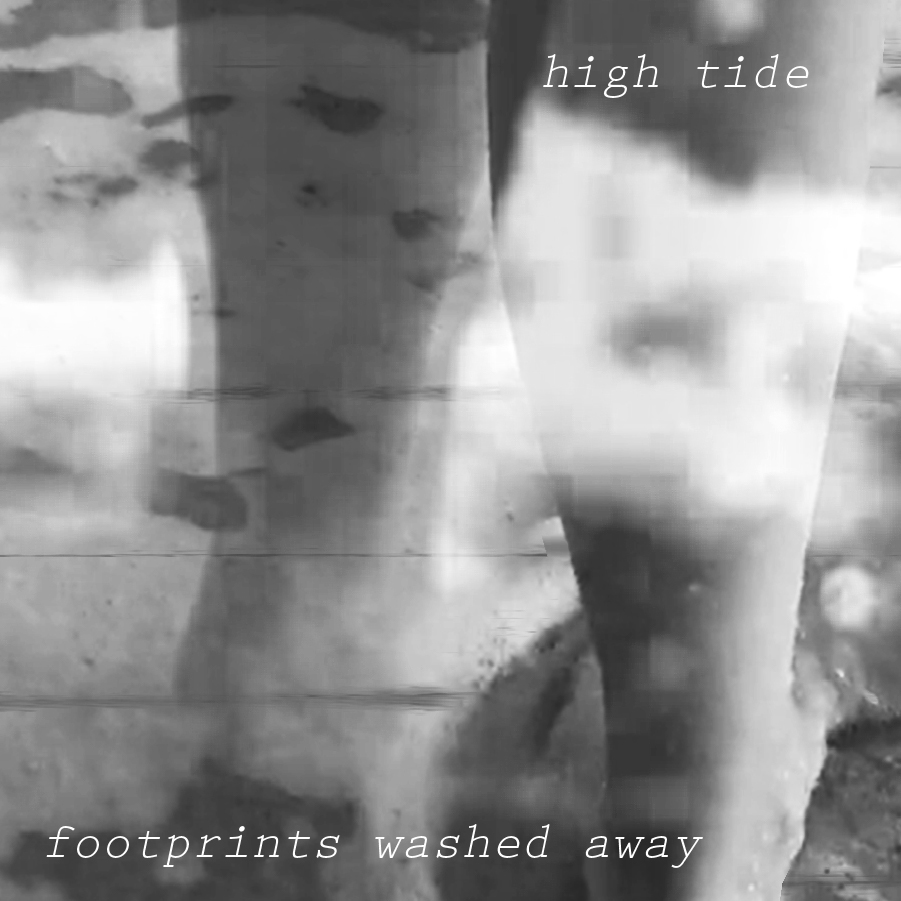
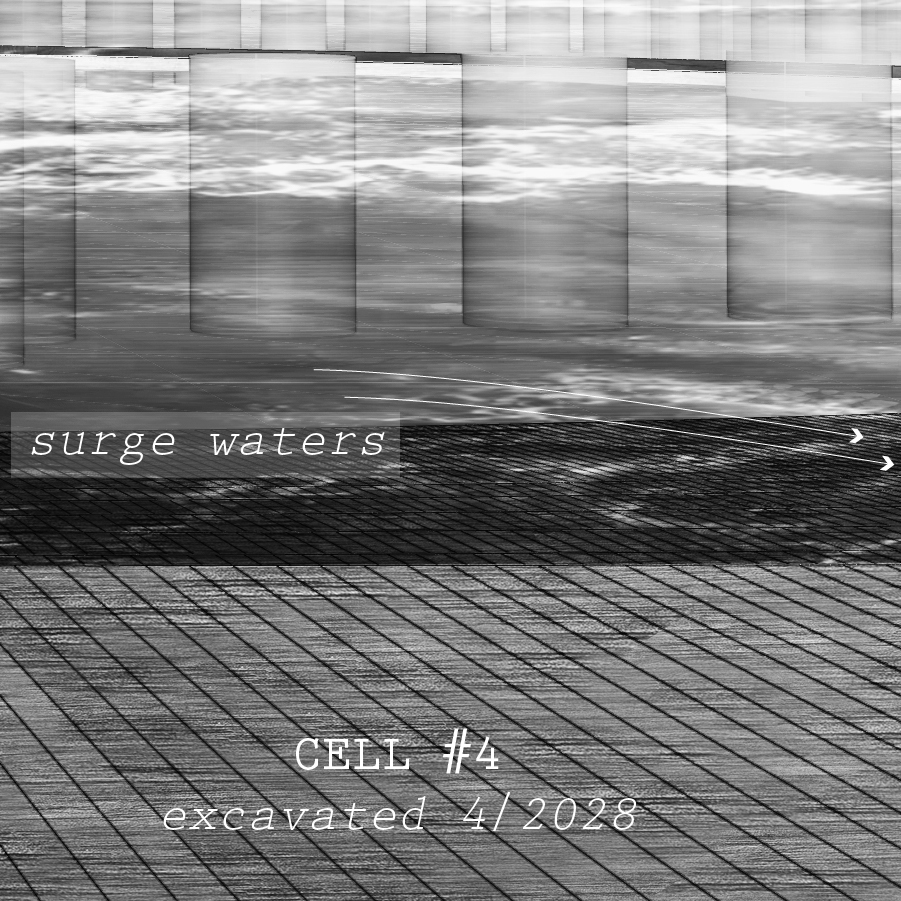
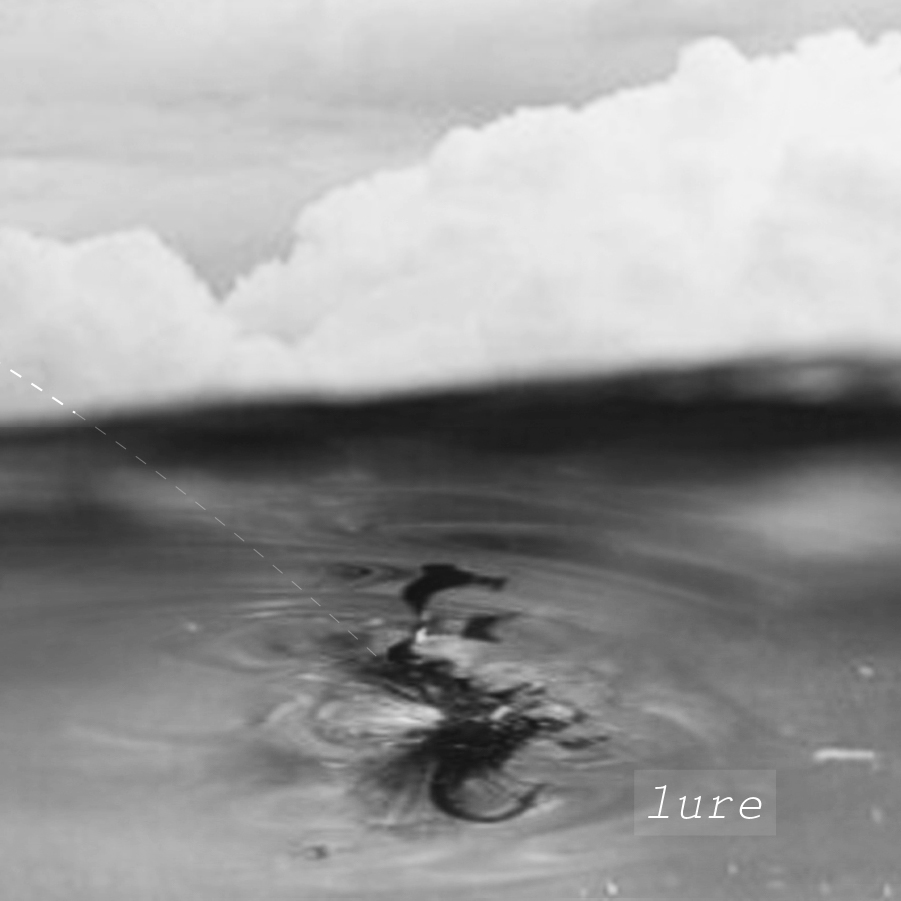
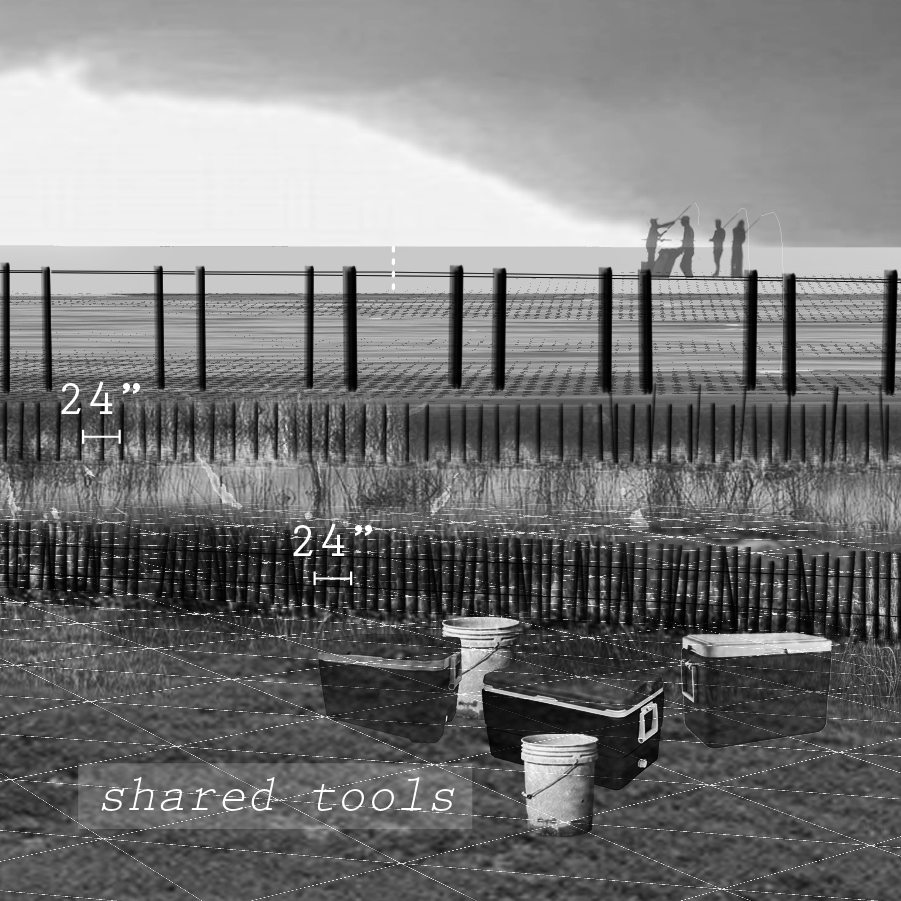
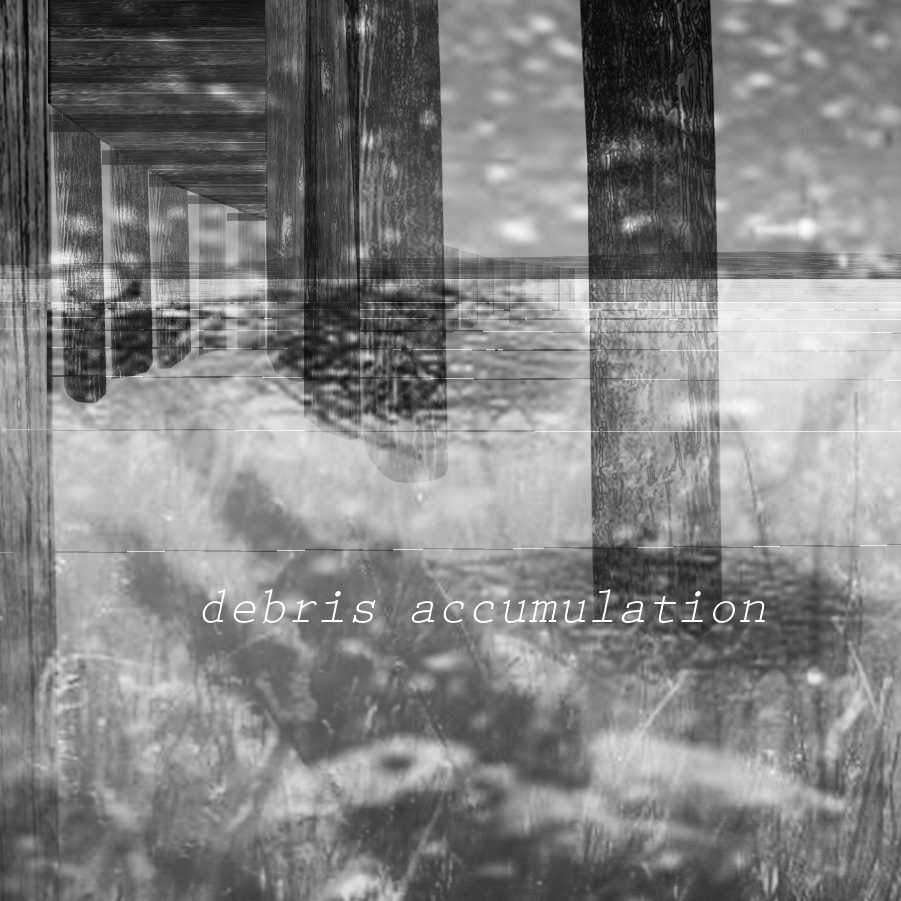

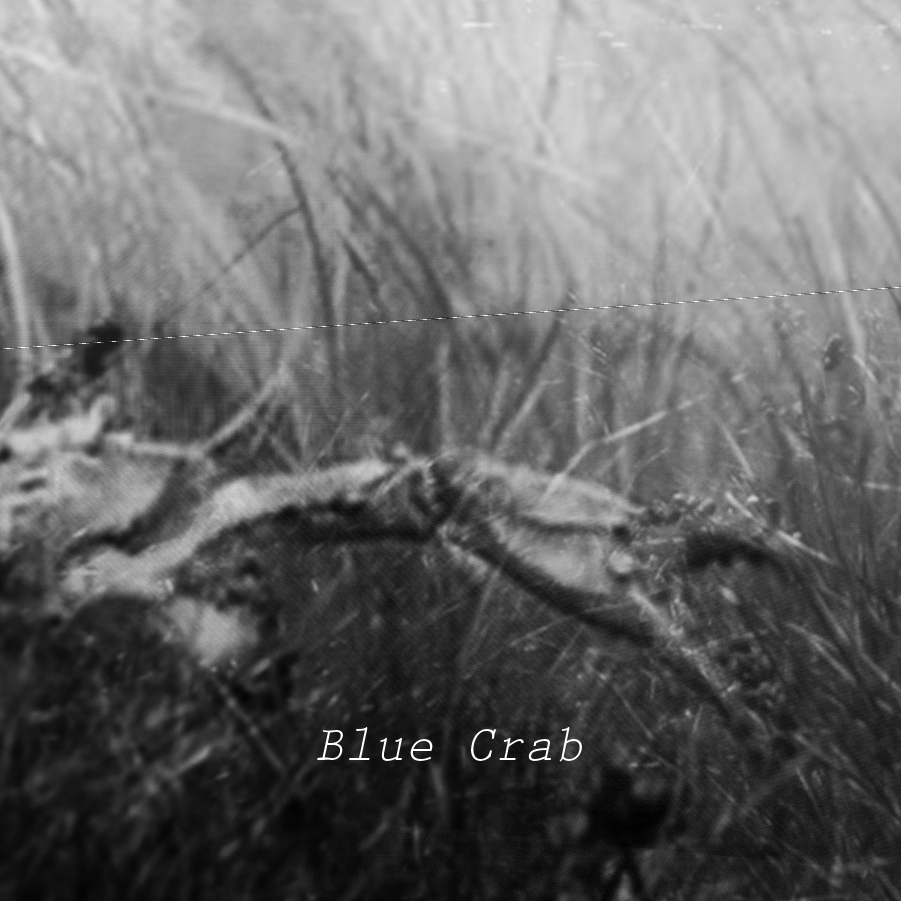


This project is designed through hurricanes; Understood
not only as a moment of instability, but as a moment of intensity that generates a closeness to water and a
thickness of land.

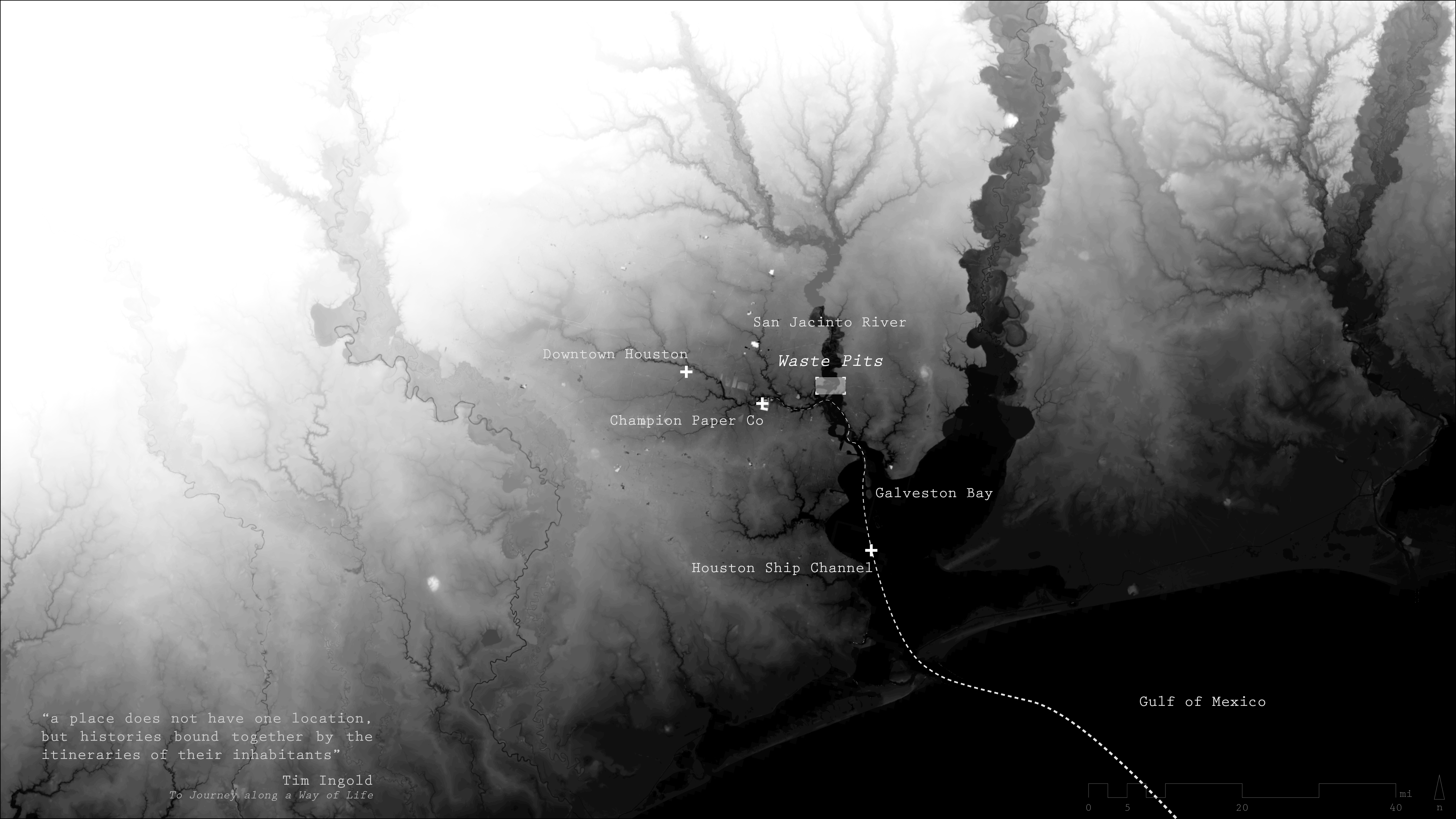
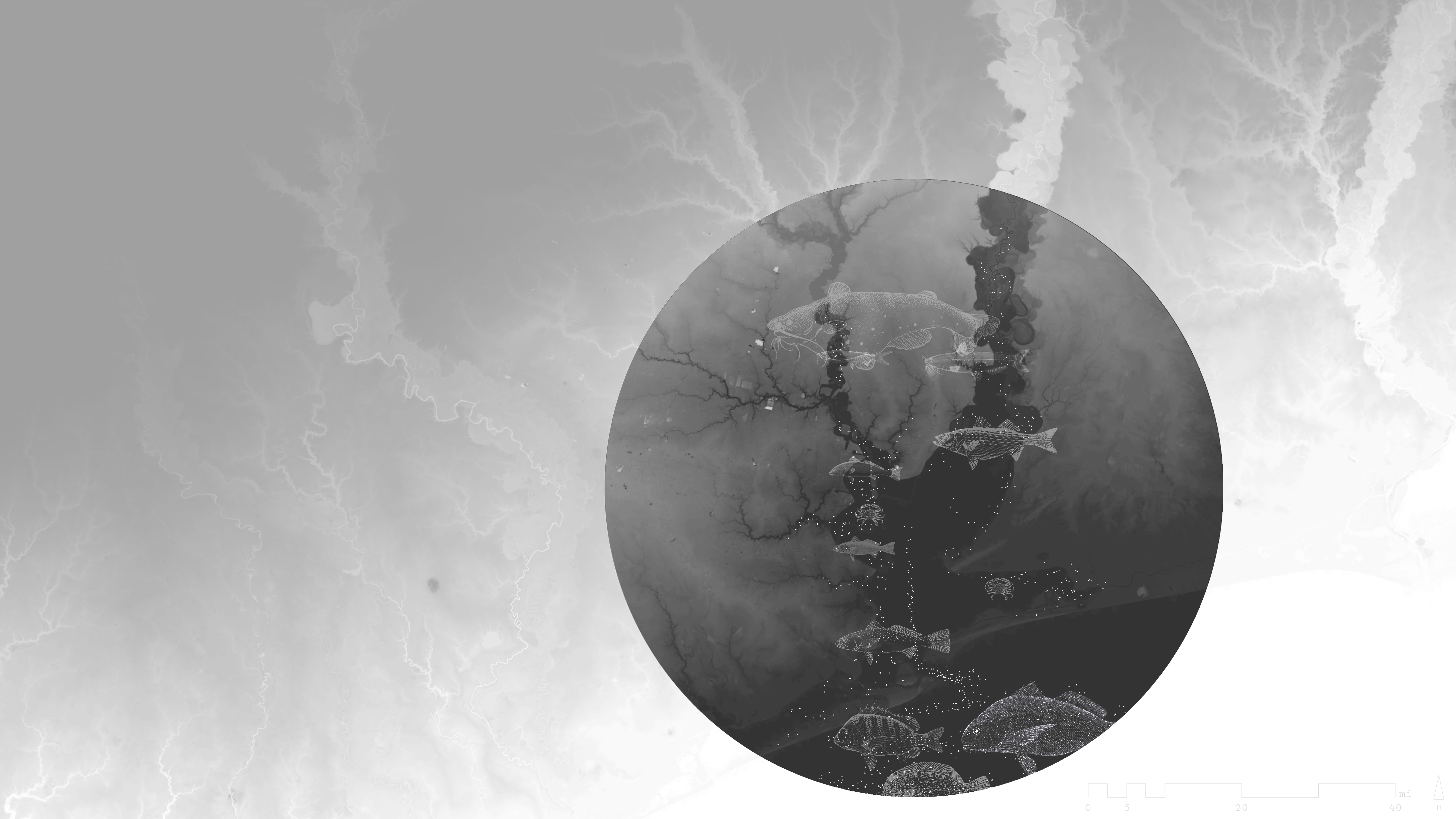

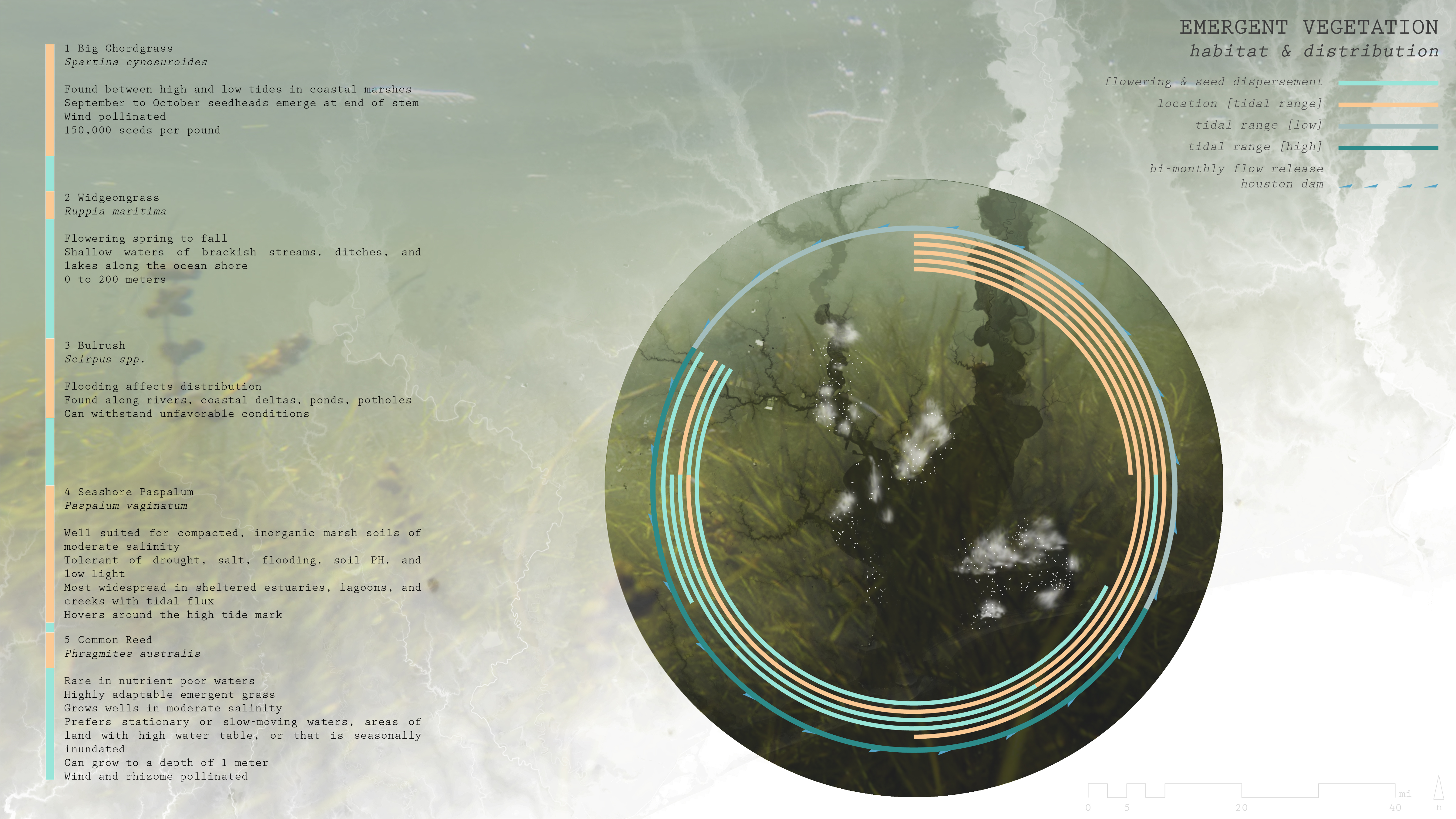

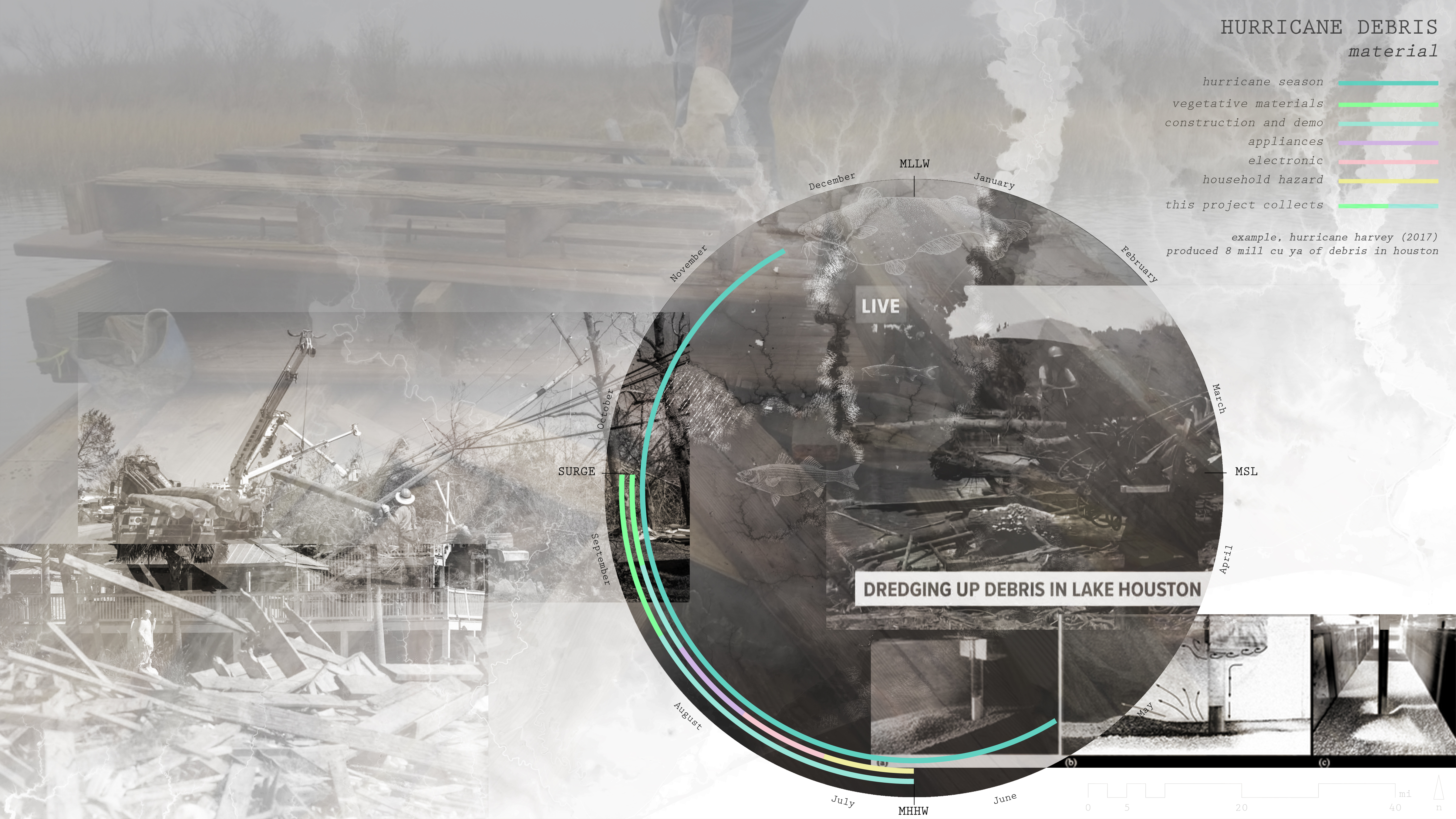
The storm can be understood here as the event to design through - and therefore - the site can be understood not as ‘site’ with a defined
boundary, but as a place layered with histories. Although there is a ‘site’, the San Jacinto River Waste Pits, located roughly twenty-miles east of Houston Texas, it’s history as a toxic dump for the Champion Paper
Company in the 1960s actually extends beyond its defined boundaries and into the flesh of fish, the sediment of the river, and the people that
cast their lines into the water in search of food.
In this project, the storm is positioned as an experience that is lived. By detaching the storm from the moment of impact and the ‘destruction’ that it leaves behind, you gain a more nuanced understanding of how the storm is an agent of change, of bounty, and even, perhaps, a moment to celebrate and endure.
In this project, the storm is positioned as an experience that is lived. By detaching the storm from the moment of impact and the ‘destruction’ that it leaves behind, you gain a more nuanced understanding of how the storm is an agent of change, of bounty, and even, perhaps, a moment to celebrate and endure.

Rather than thinking of place as a site with a defined boundary, what if we addressed place through the layered histories and experiences that make place.
That make home. That hold memories. That change.
That make home. That hold memories. That change.
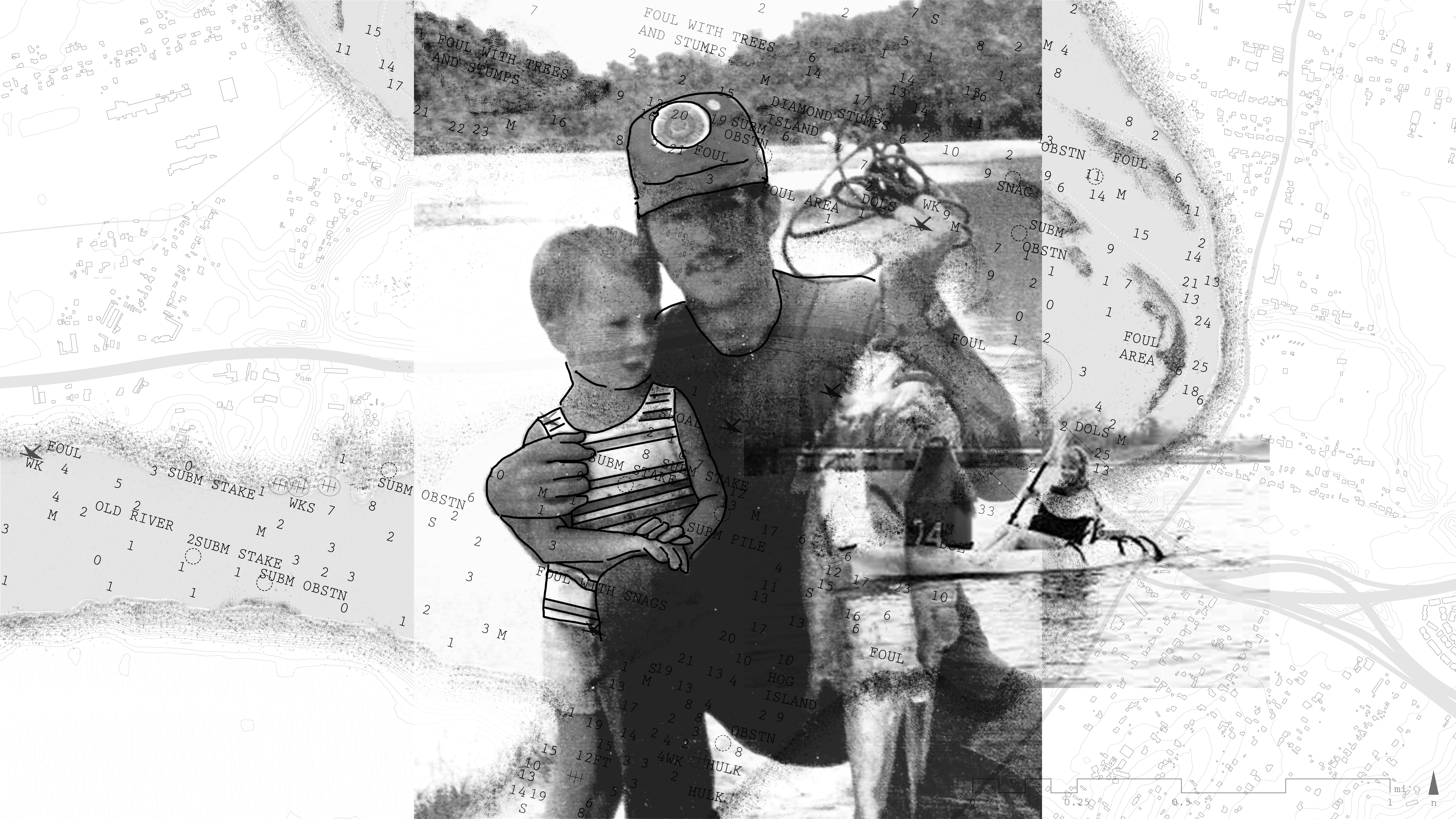
One of these histories has an explicit relationship to the body.

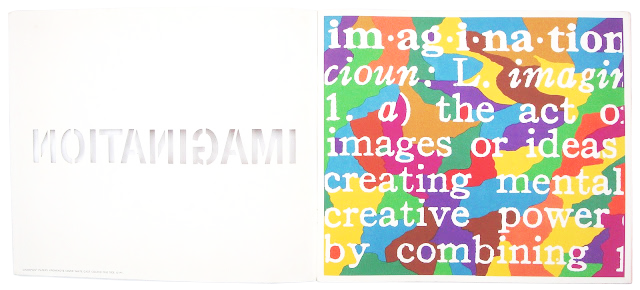










In 1965, the Champion Paper Company, located on the Houston Ship Channel, was commissioned to produce a brochure of paper and ink samples, called the Imagination Series. The volumes took an entire year to develop and offered bound research and inspiration for designers.
The popularity of this series thrusted the Champion Paper Company to the top of the market for paper production. As production soared, so did the waste. The San Jacinto River Waste Pits were created in 1965 to dispose of wastewater from the local paper company. Each day, tens of thousands of gallons of wastewater and sludge was transported by barge along the Houston Ship Channel to the newly formed, unlined, waste pits at the mouth of the river. This waste, contaminated with dioxins and furans, pose significant risk to the adjacent community, fish, and wildlife.
In 2008, the site was listed as an active Superfund Site and was closed to the public. The EPA has a current remediation strategy for the Pits that carve deep scars into the land at the Northern and Southern Impoundments. My strategy is to use this EPA cleanup as a design opportunity - To weave in the storm, the body, and the lives of those that enjoy this place.

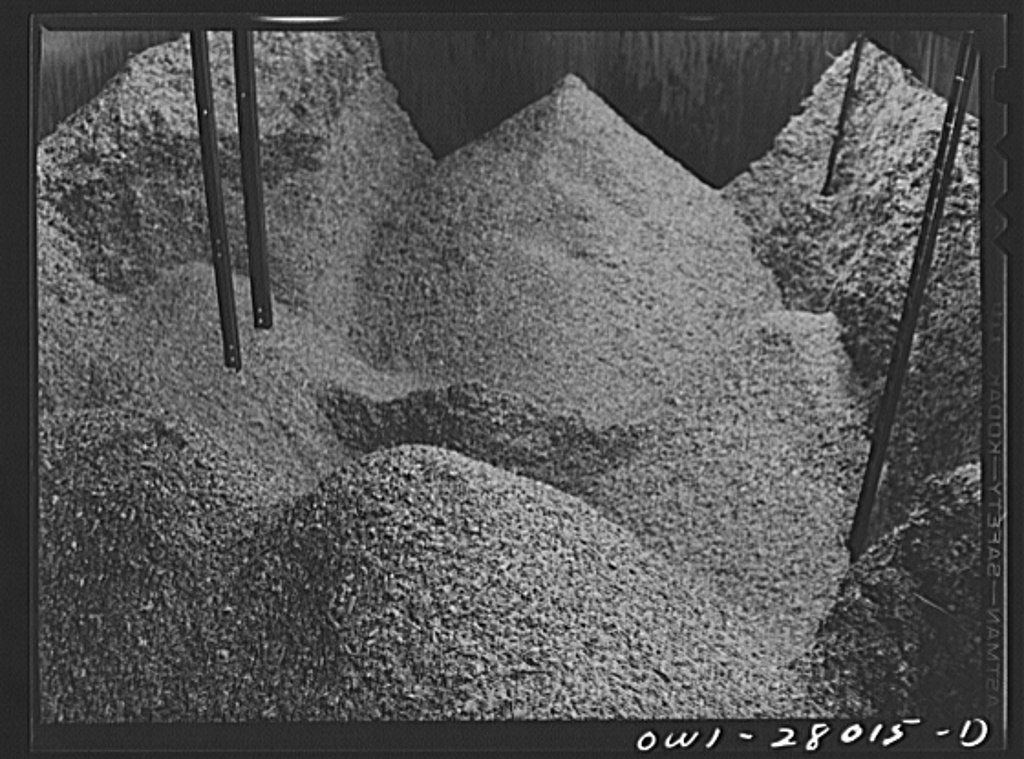



NORTHERN IMPOUNDMENT
At the northern impoundment, sequence, indeterminacy,
and embodiment informs the design of a fishing pier network that extends the body over the deep river channel,
where the cast from a fishing rod extends far beyond the
shore.
![]()
![]()
Through reframing existing materials and working with dynamic processes, this design traces how people measure this place.
![]()
![]()
![]()
![]()
![]()
![]()
![]()
![]()
![]()
![]()
![]()
![]()
![]()
![]()
![]()
![]()
![]()
![]()
As you move down the steps of the Round Pier, you must enter into the river, wading into the warm shallow brackish water to reach the long pier. This act of wading into the river is intentional – subsistence fishers often rely on the shoreline to fish from, only moving as deep into the water as their body, and the river, allows. The act of lowering oneself into the shallows, moving under the rounded pier, and out onto the long pier, is an act of agency over the body.
![]()
![]()
![]()
![]()
![]()
The power in gaining access to the deep river channel that you couldn’t reach before is embodied in Long Pier. The memories of the storms that have passed become visible as the piers are constructed over time. These piers hold memory, change, and materials of the hurricanes, as well as the lives of those that fish from them. These piers attempt to balance personal trauma with community construction as an act of shared memory.
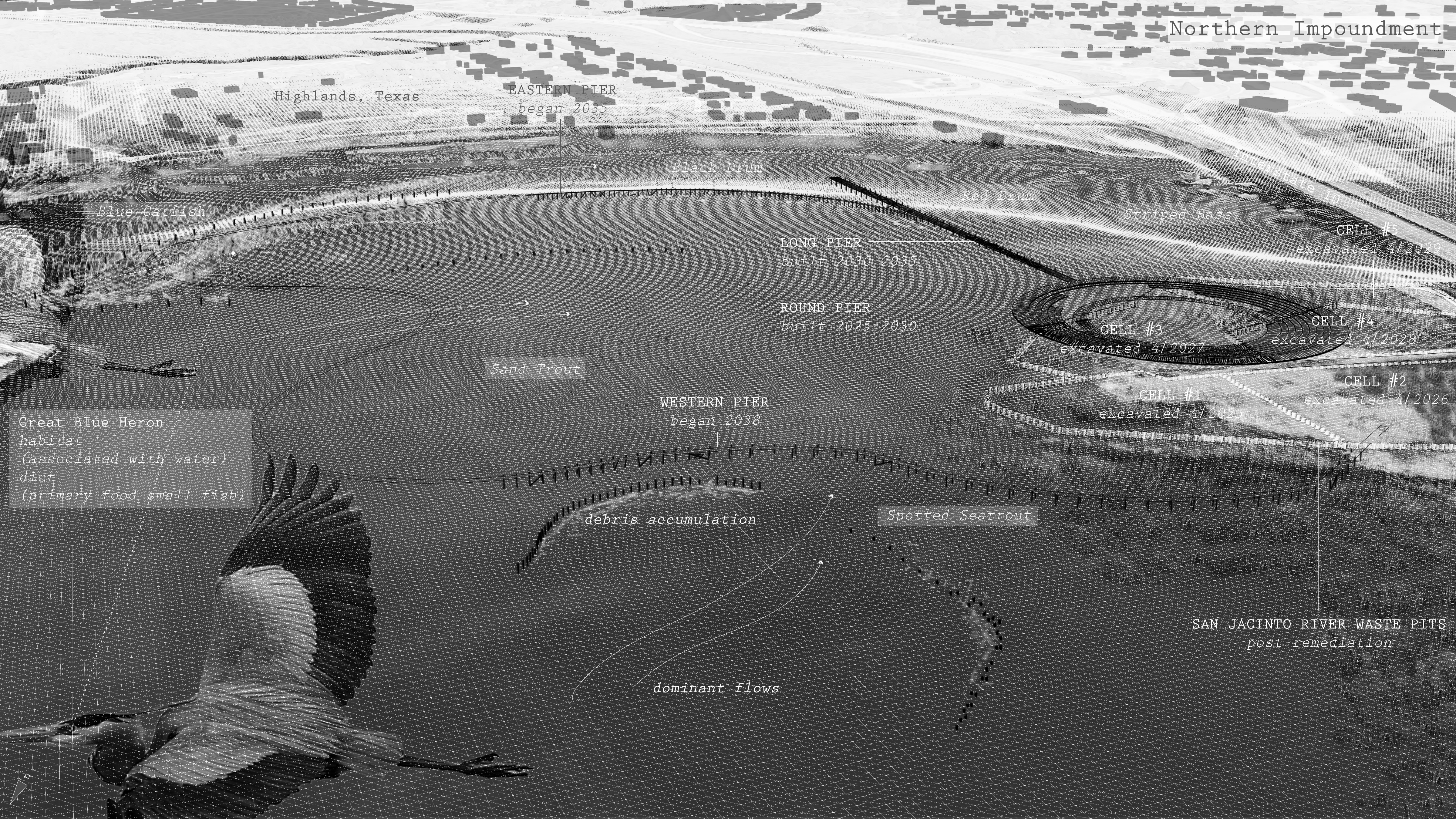
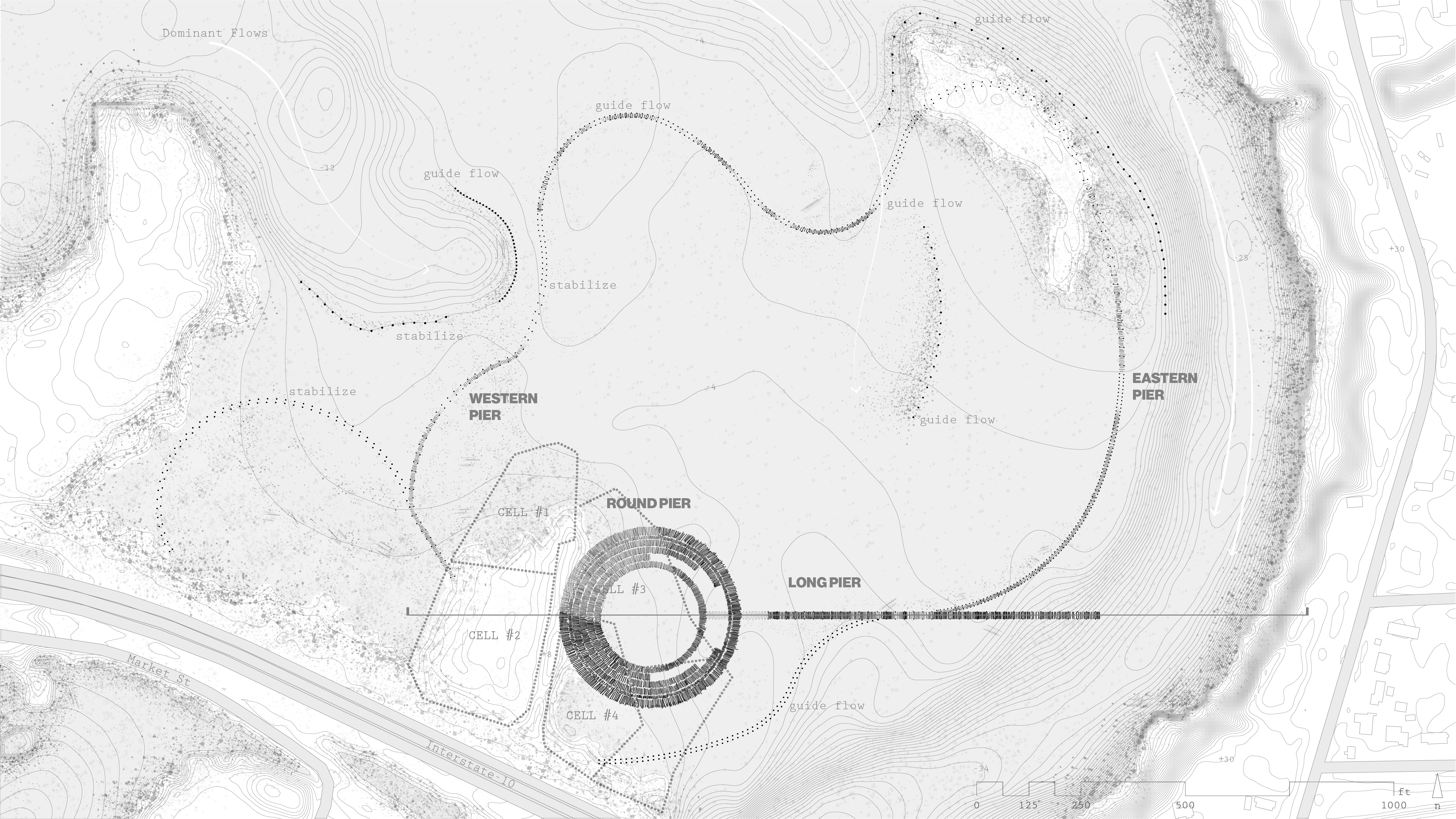
Through reframing existing materials and working with dynamic processes, this design traces how people measure this place.

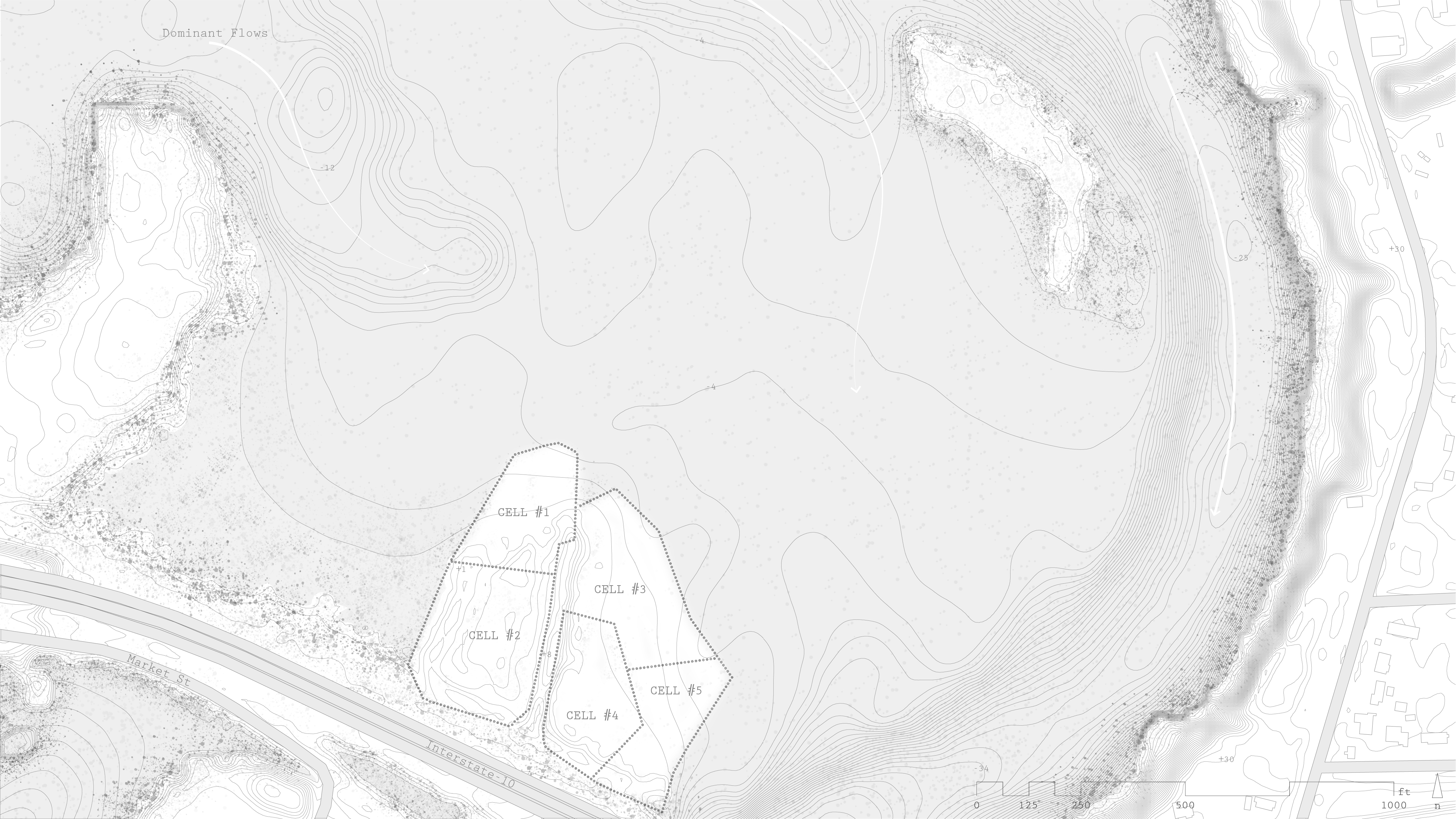



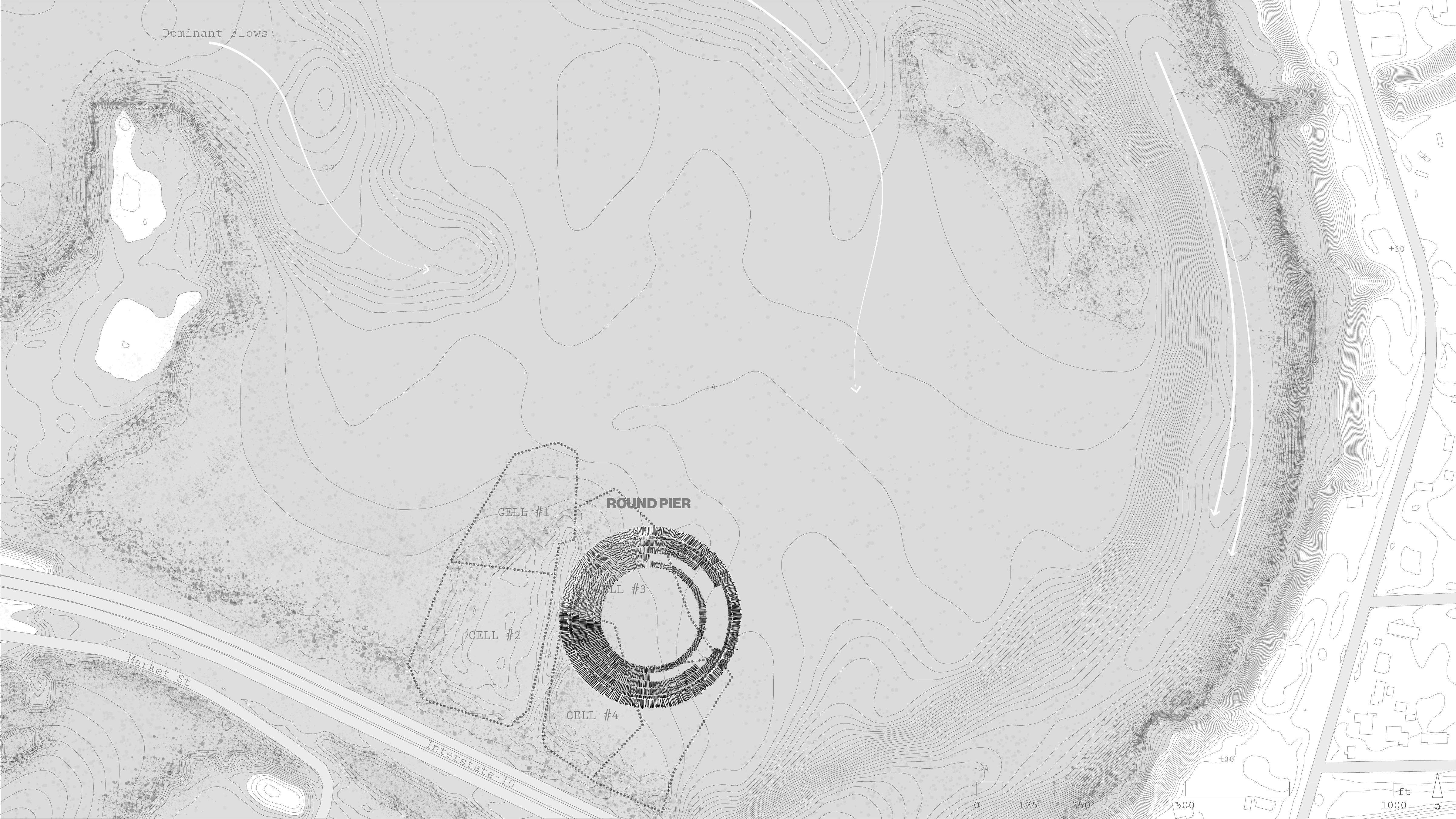


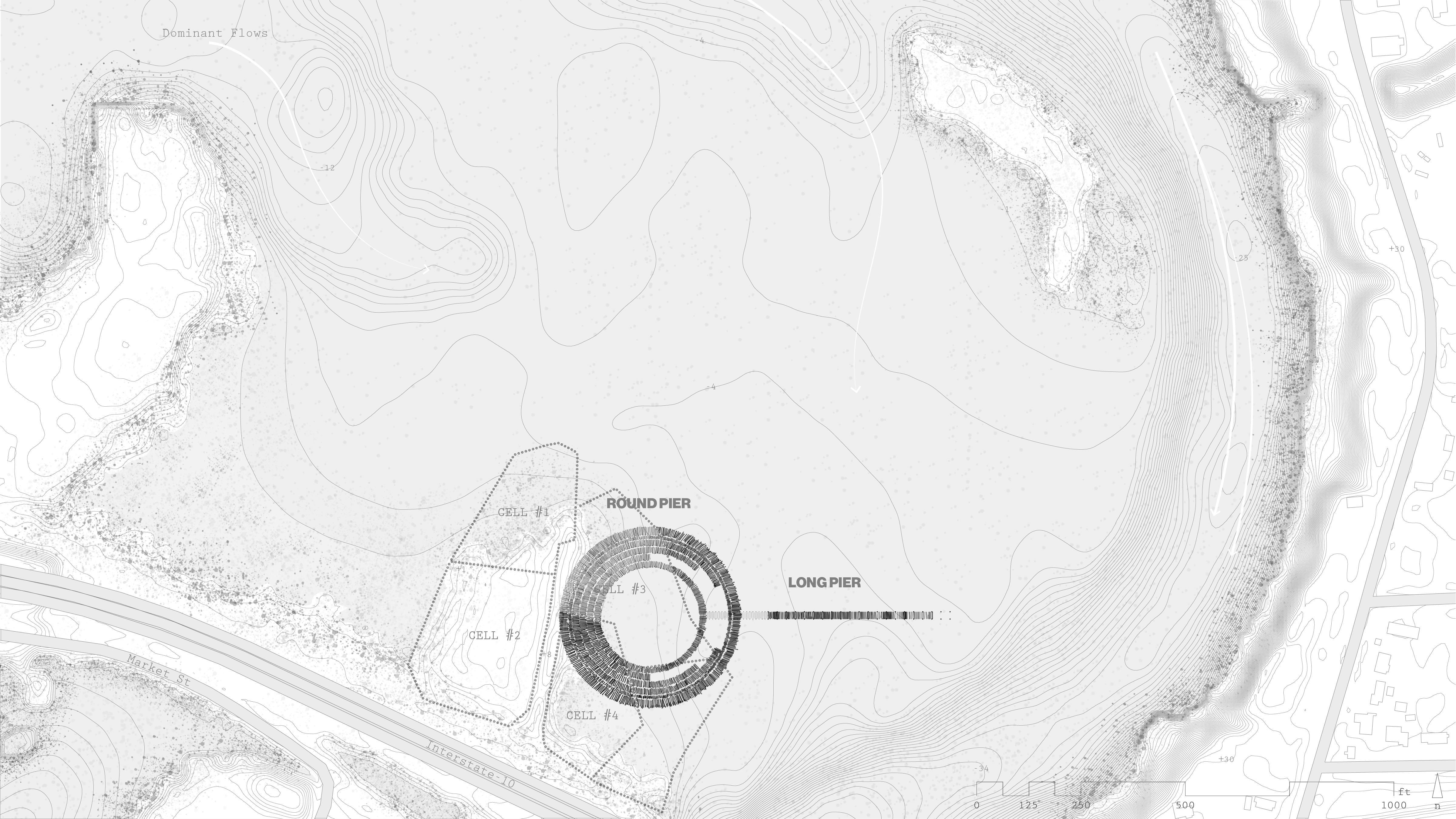
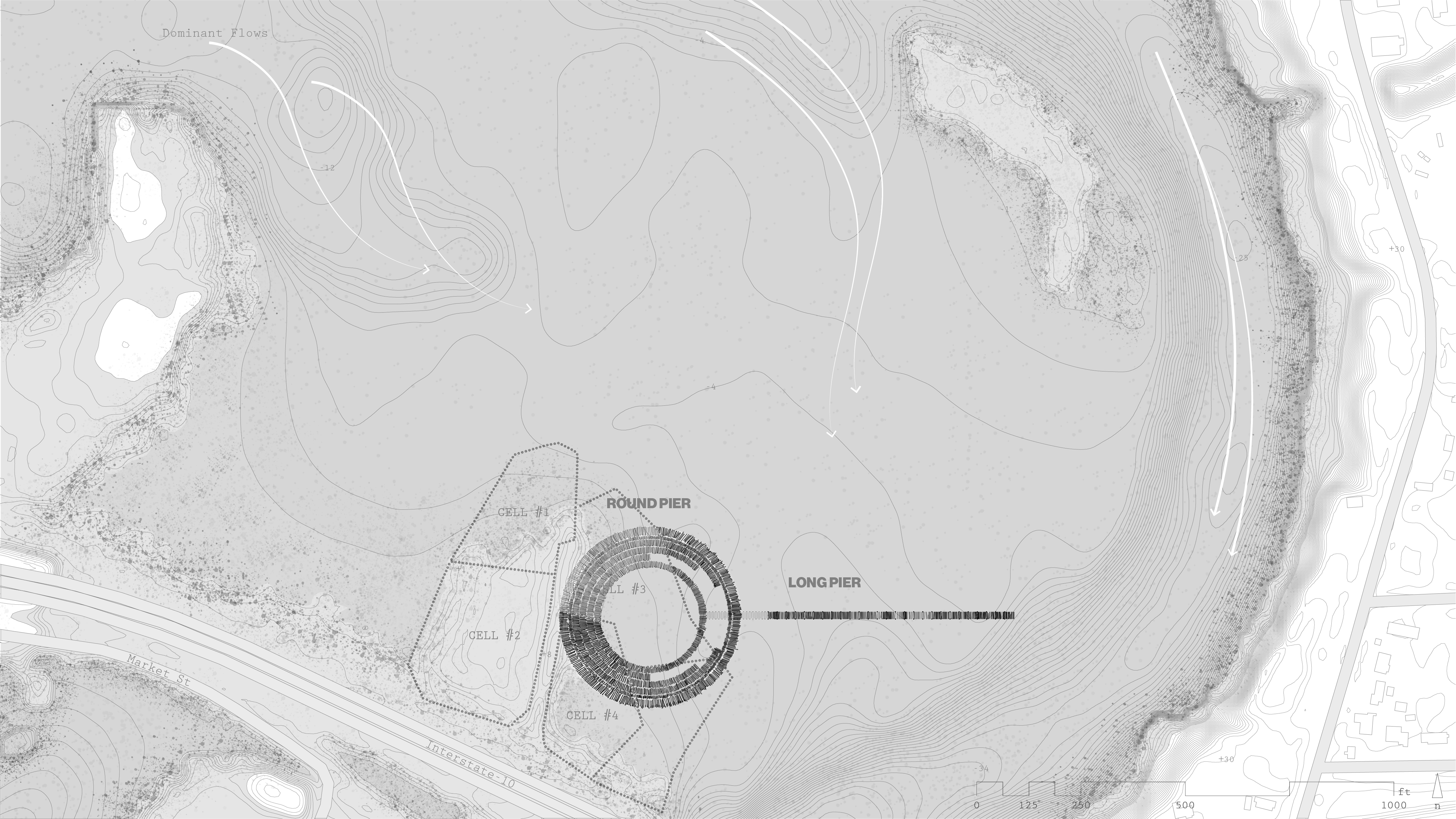
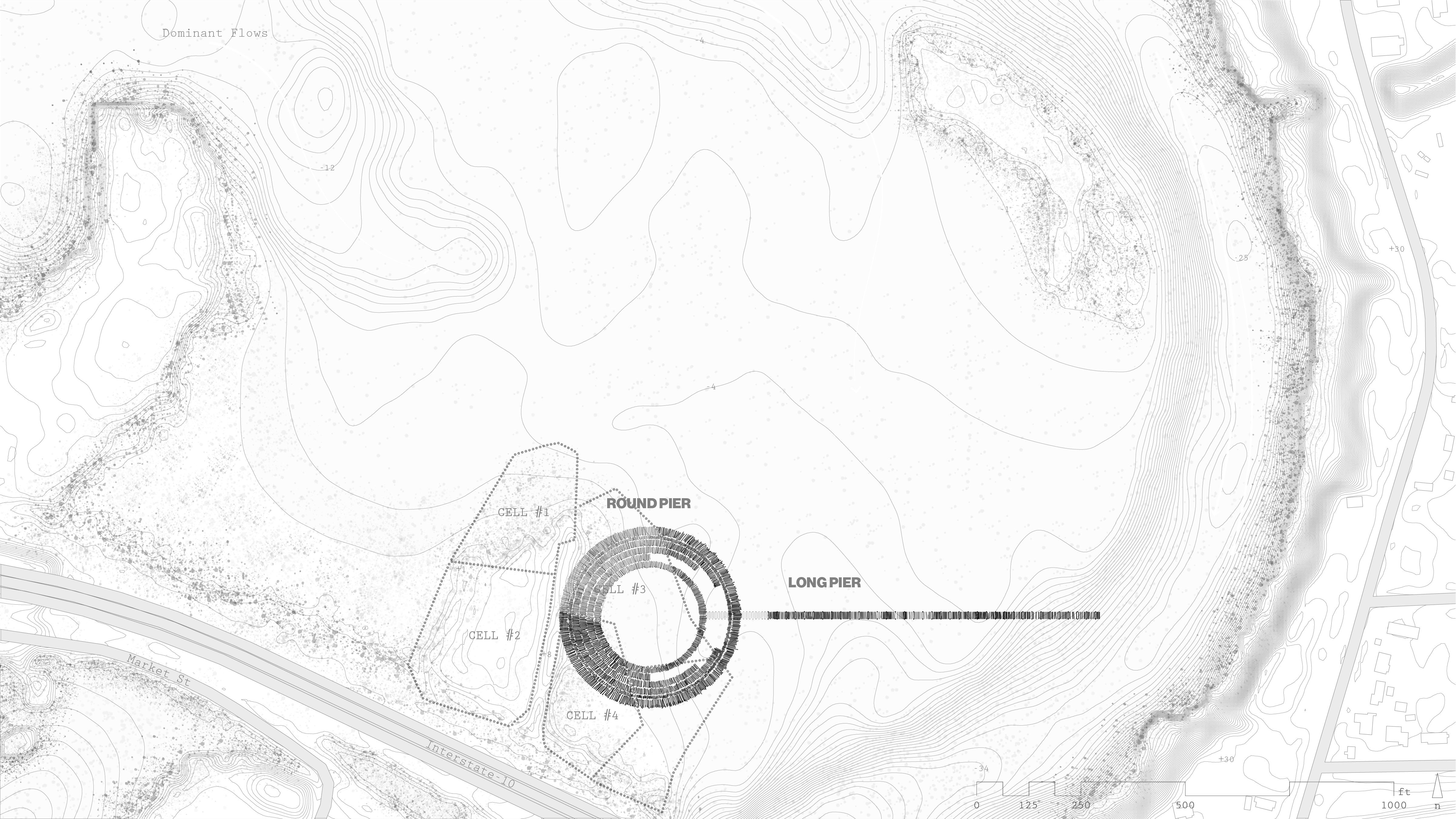


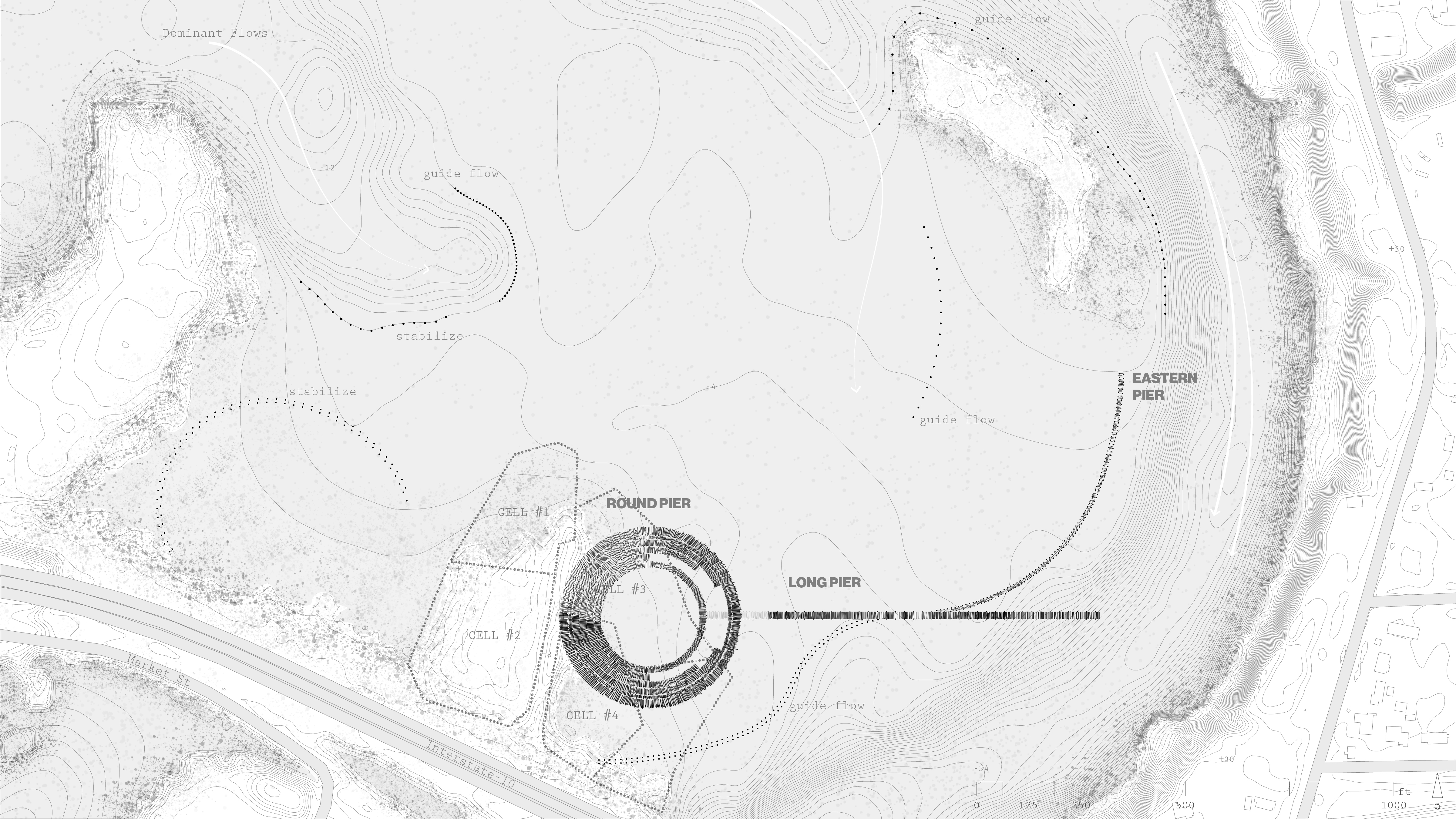

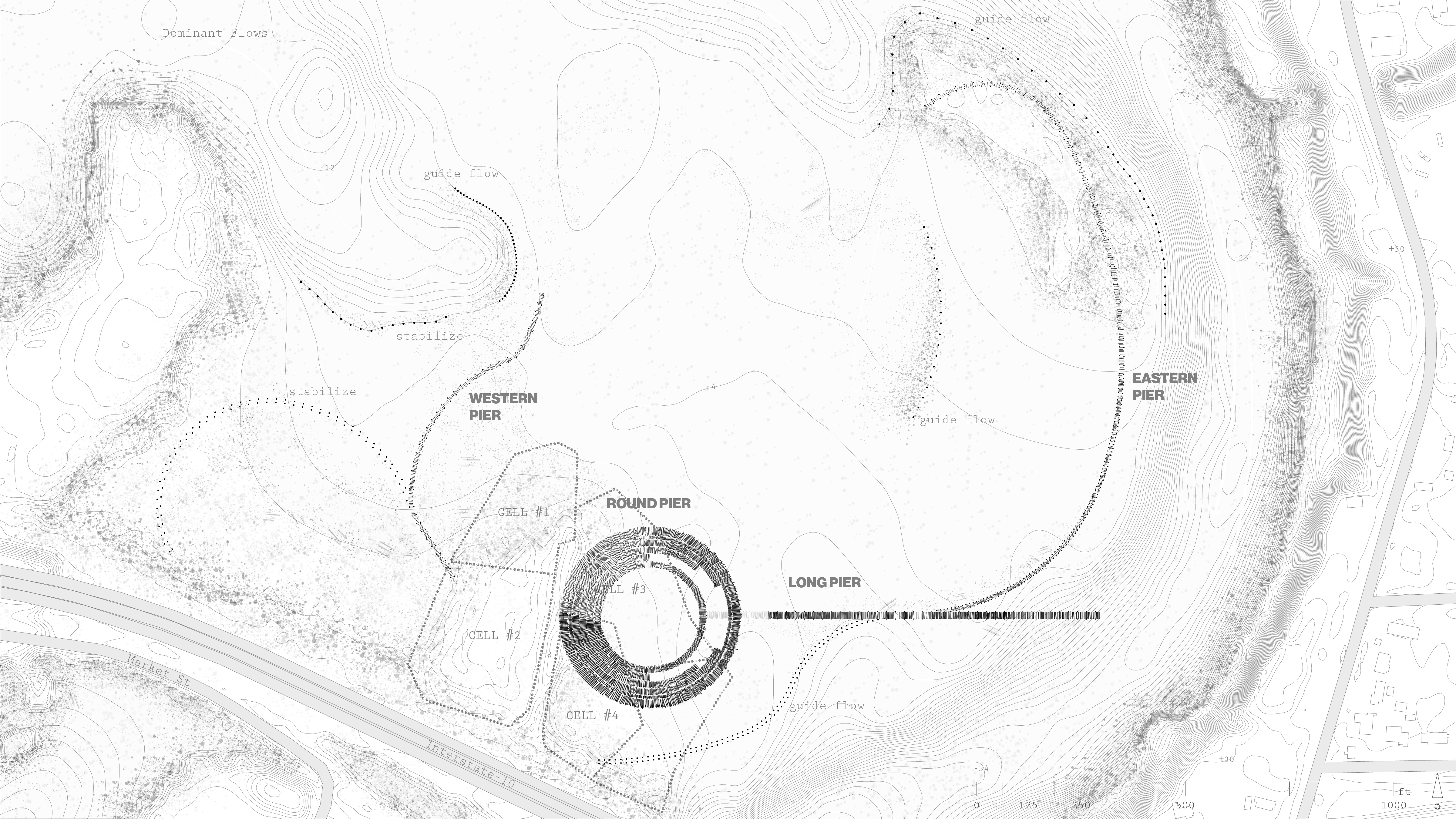


As you move down the steps of the Round Pier, you must enter into the river, wading into the warm shallow brackish water to reach the long pier. This act of wading into the river is intentional – subsistence fishers often rely on the shoreline to fish from, only moving as deep into the water as their body, and the river, allows. The act of lowering oneself into the shallows, moving under the rounded pier, and out onto the long pier, is an act of agency over the body.
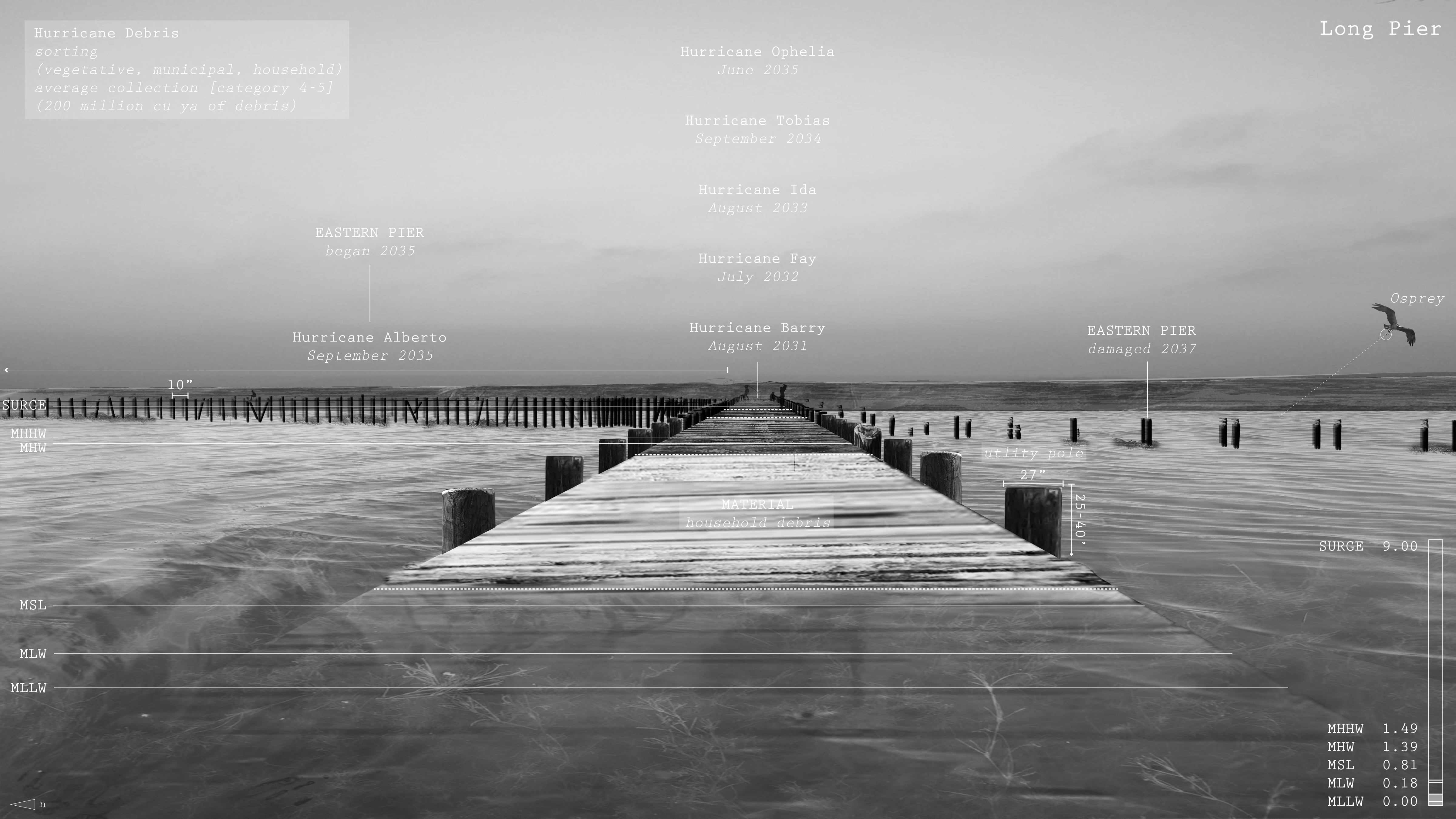

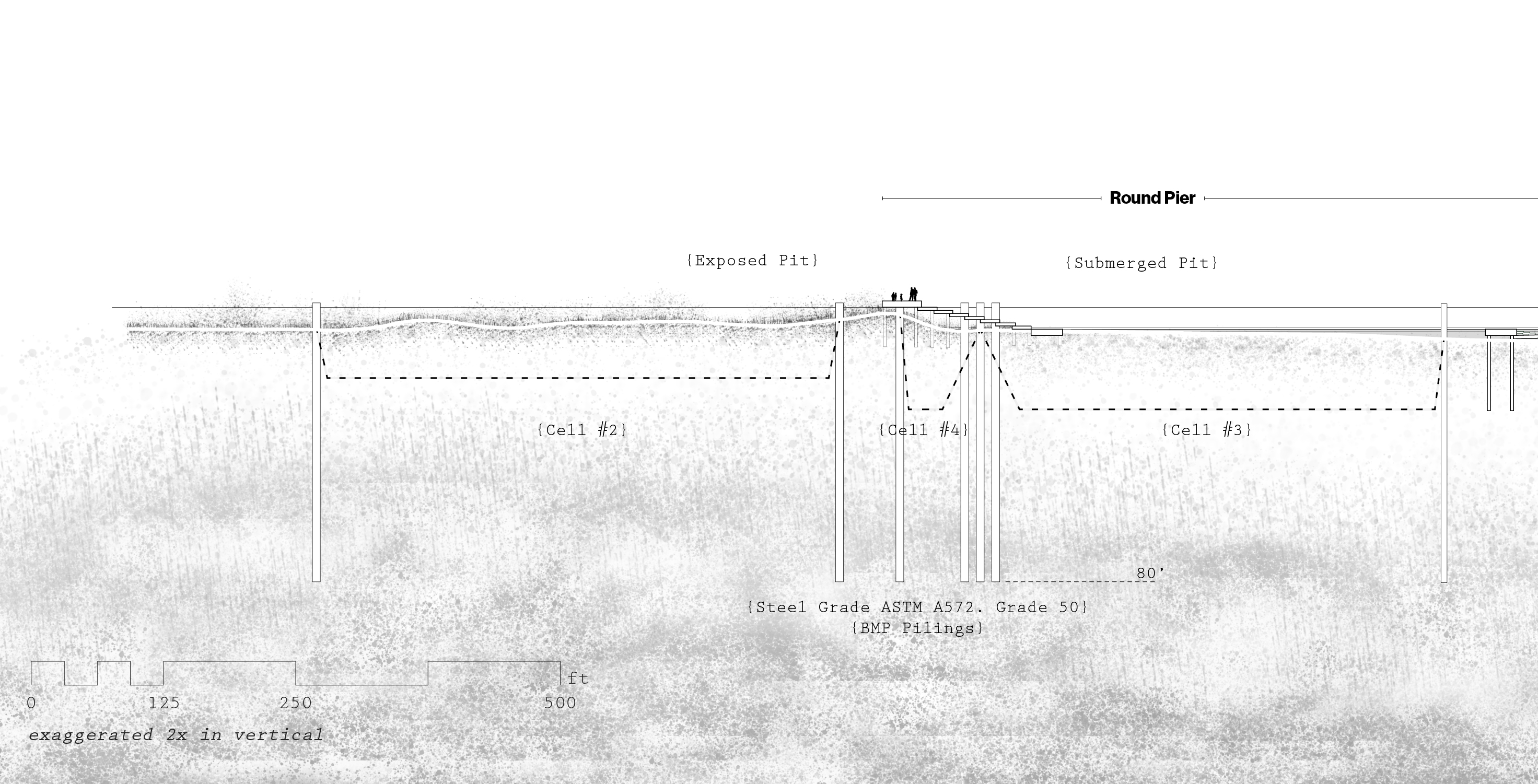
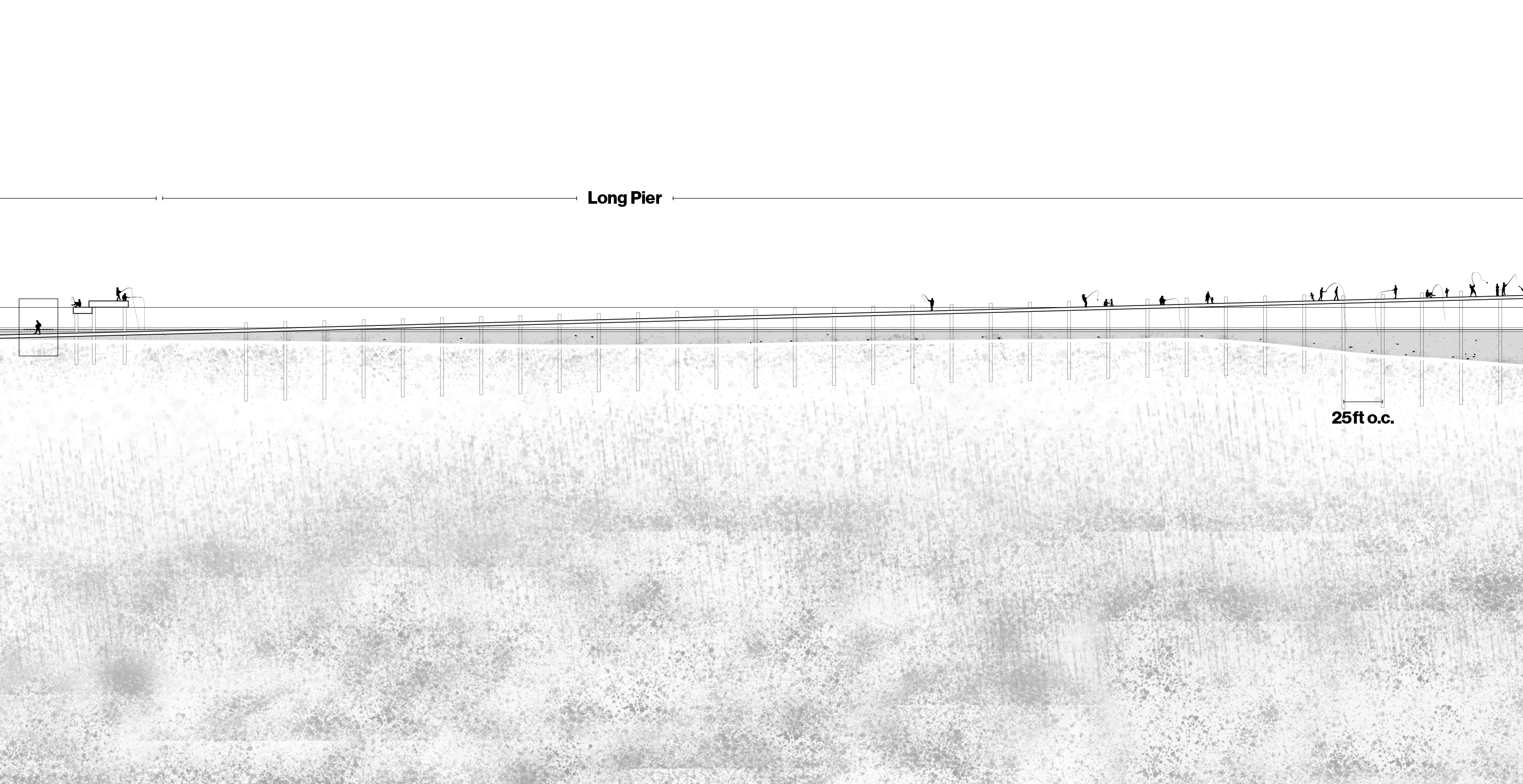

The power in gaining access to the deep river channel that you couldn’t reach before is embodied in Long Pier. The memories of the storms that have passed become visible as the piers are constructed over time. These piers hold memory, change, and materials of the hurricanes, as well as the lives of those that fish from them. These piers attempt to balance personal trauma with community construction as an act of shared memory.
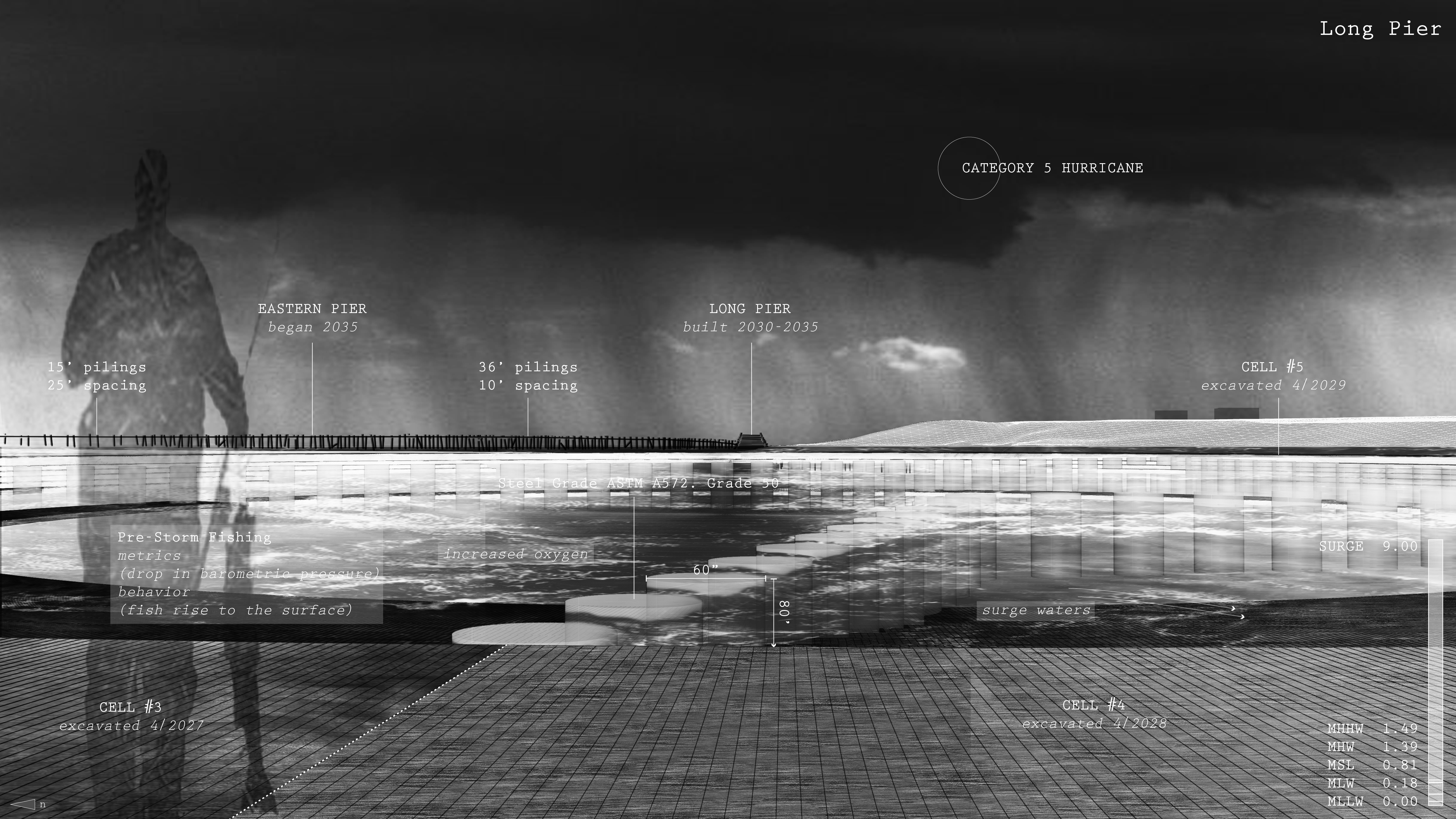
SOUTHERN IMPOUNDMENT
Using the existing language of the EPA’s strategy at the
Southern Impoundment, I propose a different type of silt fencing to guide sediment accumulation that in turn,
promotes emergent vegetation to take hold.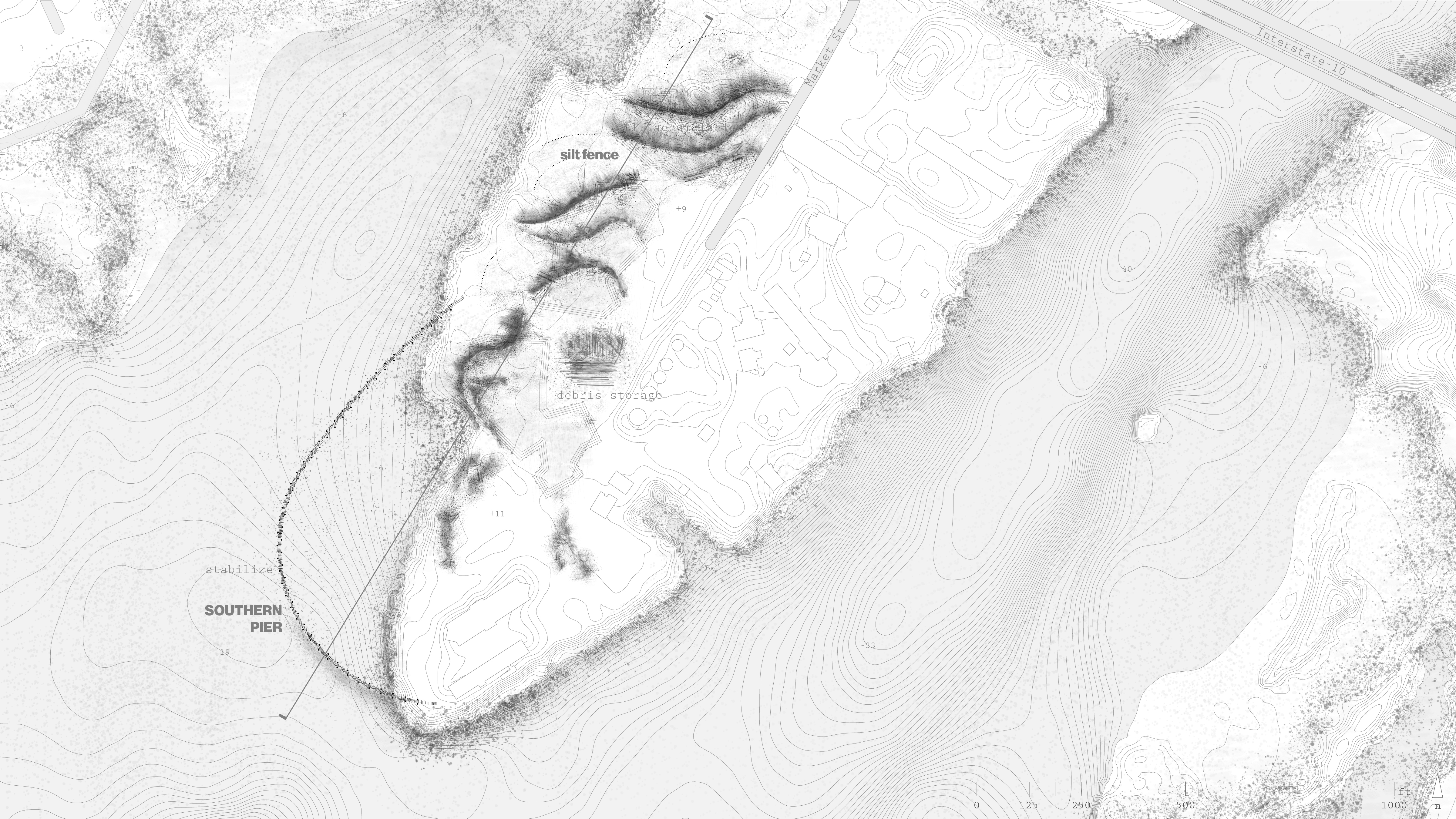
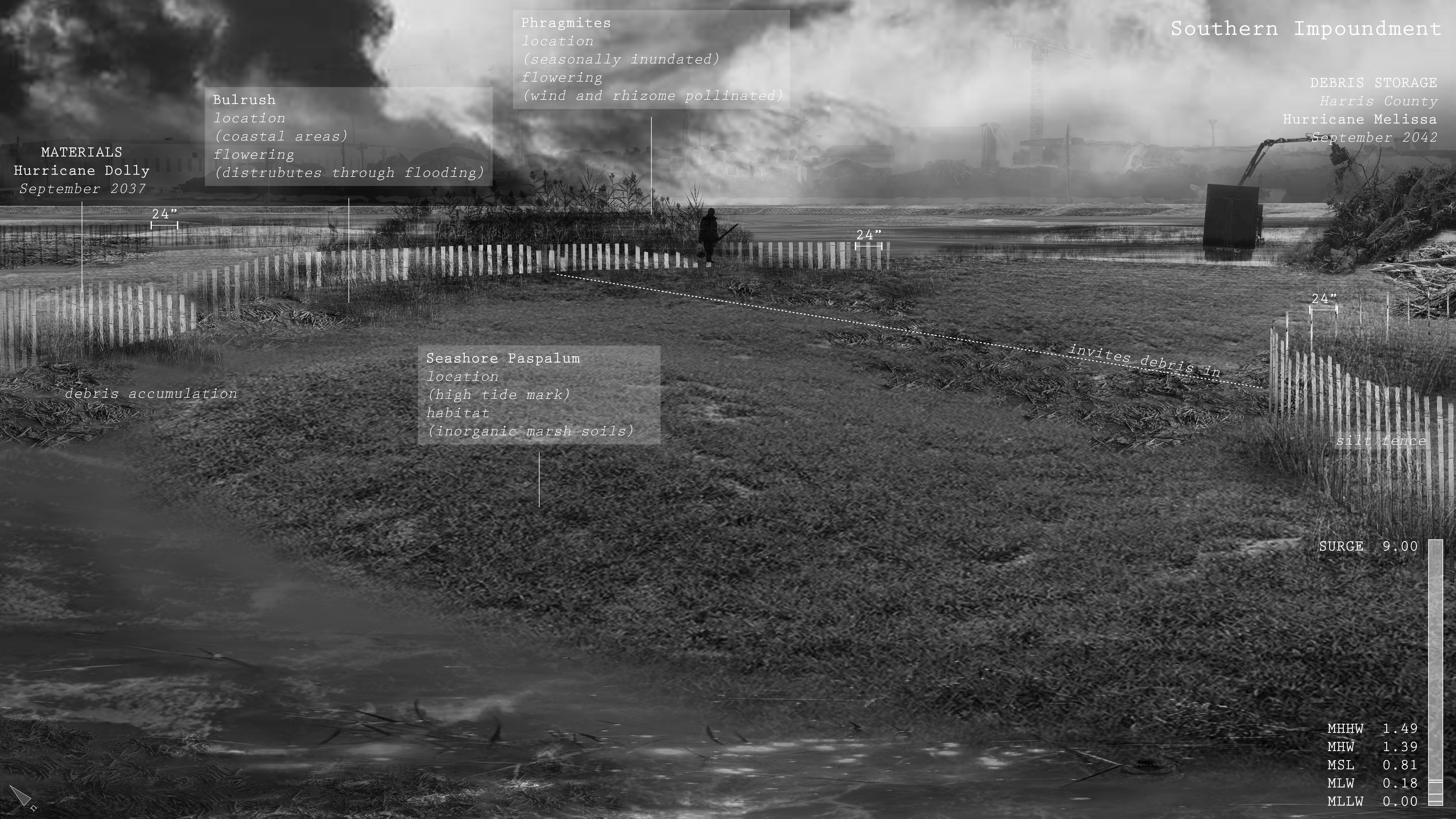
Unlike the northern impoundment, this process is not integrated into the EPAs remediation plan, but emerges post-remediation as a means to mend the scars they left behind. These silt fences are spaced in rows that let the storm surge in at varying degrees. The tighter their spacing, the more accumulation of sediment from the river, the more emergent vegetation that grows thereafter. The emergence of the five species of plants then becomes a register of the strength and age of the storms.

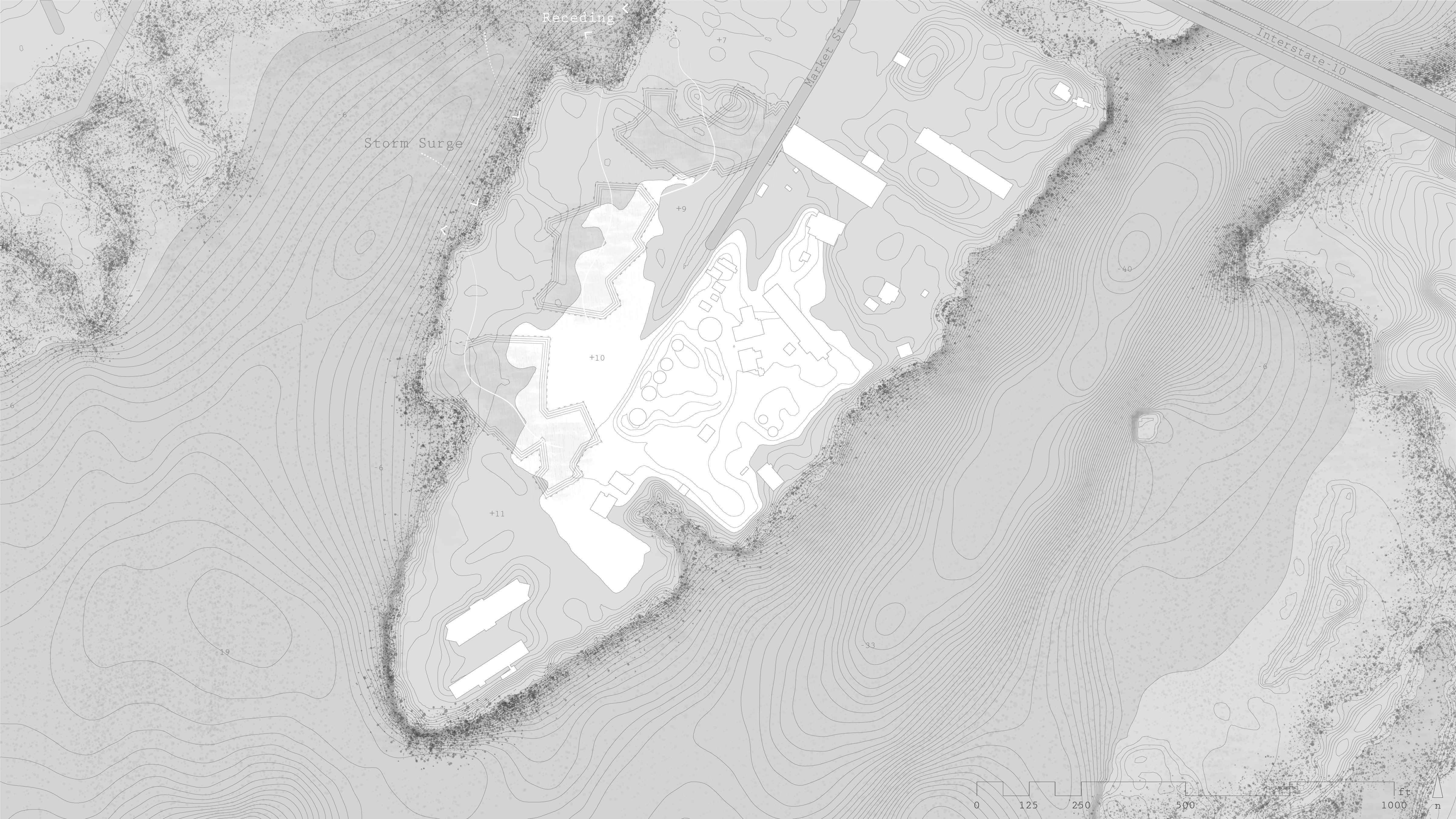
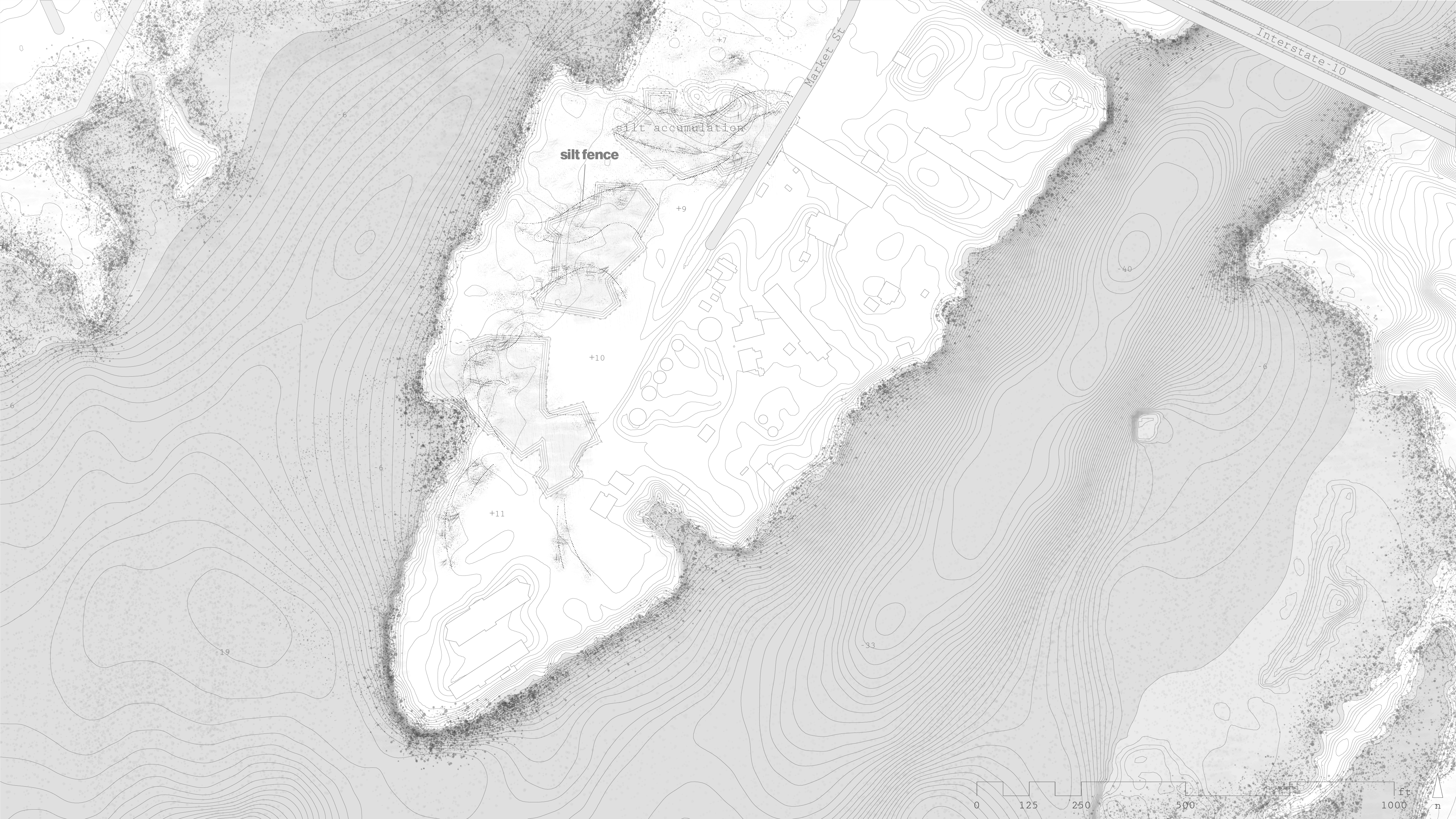

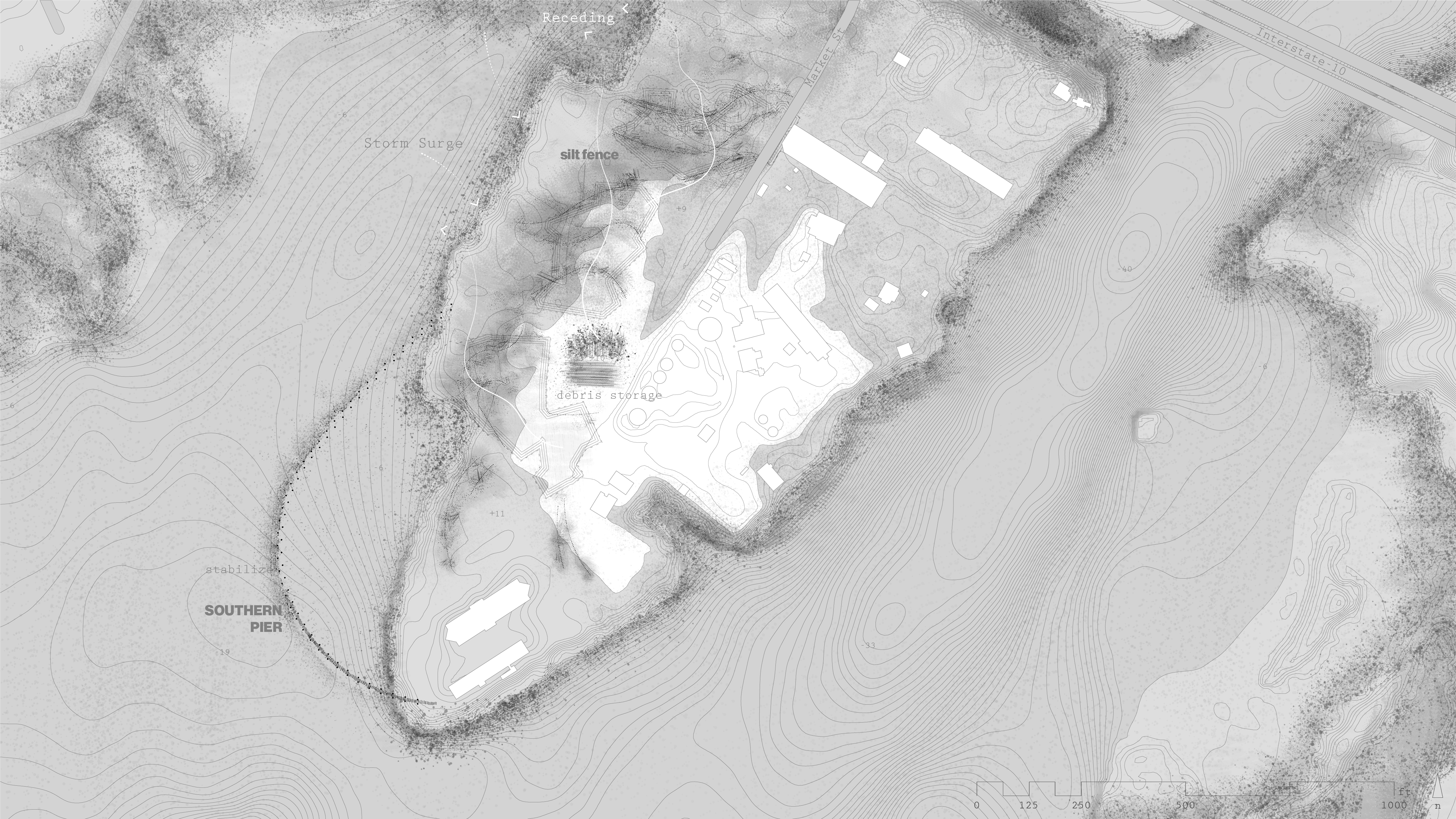


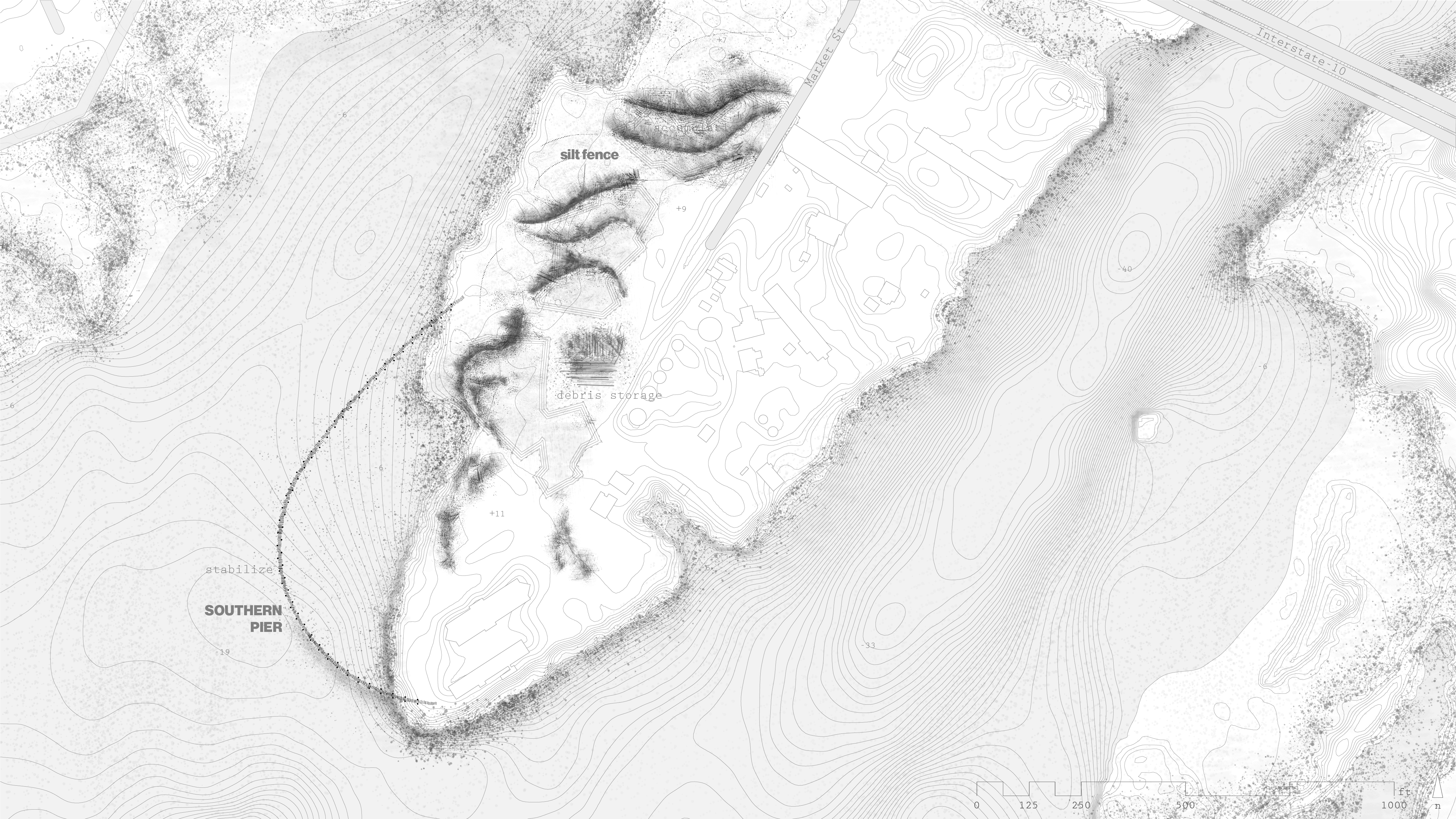

These fences are dynamic, shifting over time to collect sediment as ground and vegetation builds up around them. They shift in relation to the storm - As the thickness of the land builds, the water shifts around it. The dynamics of this place are in flux, a call and response to the needs and wants of this place. The accumulation of this sediment on land slows the receding water, depositing more sediment in the shallows off-shore.
WATER
In this project, the power of water is also positioned as a conduit and
mode of connection. The design does not stop at the shoreline, it digs deep into the river and builds upon existing fluid dynamics.These four glimpses into the water illuminate this.
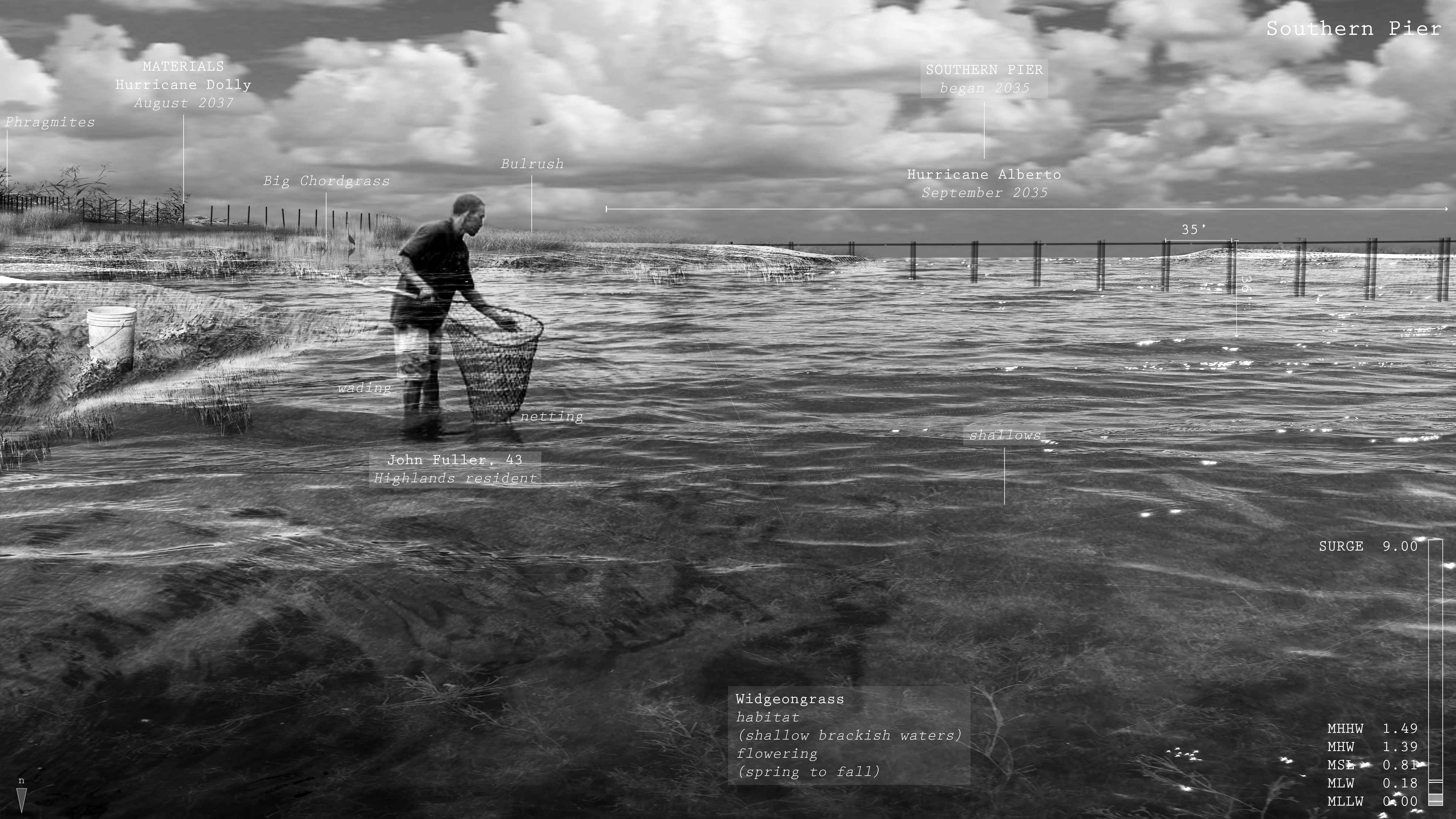
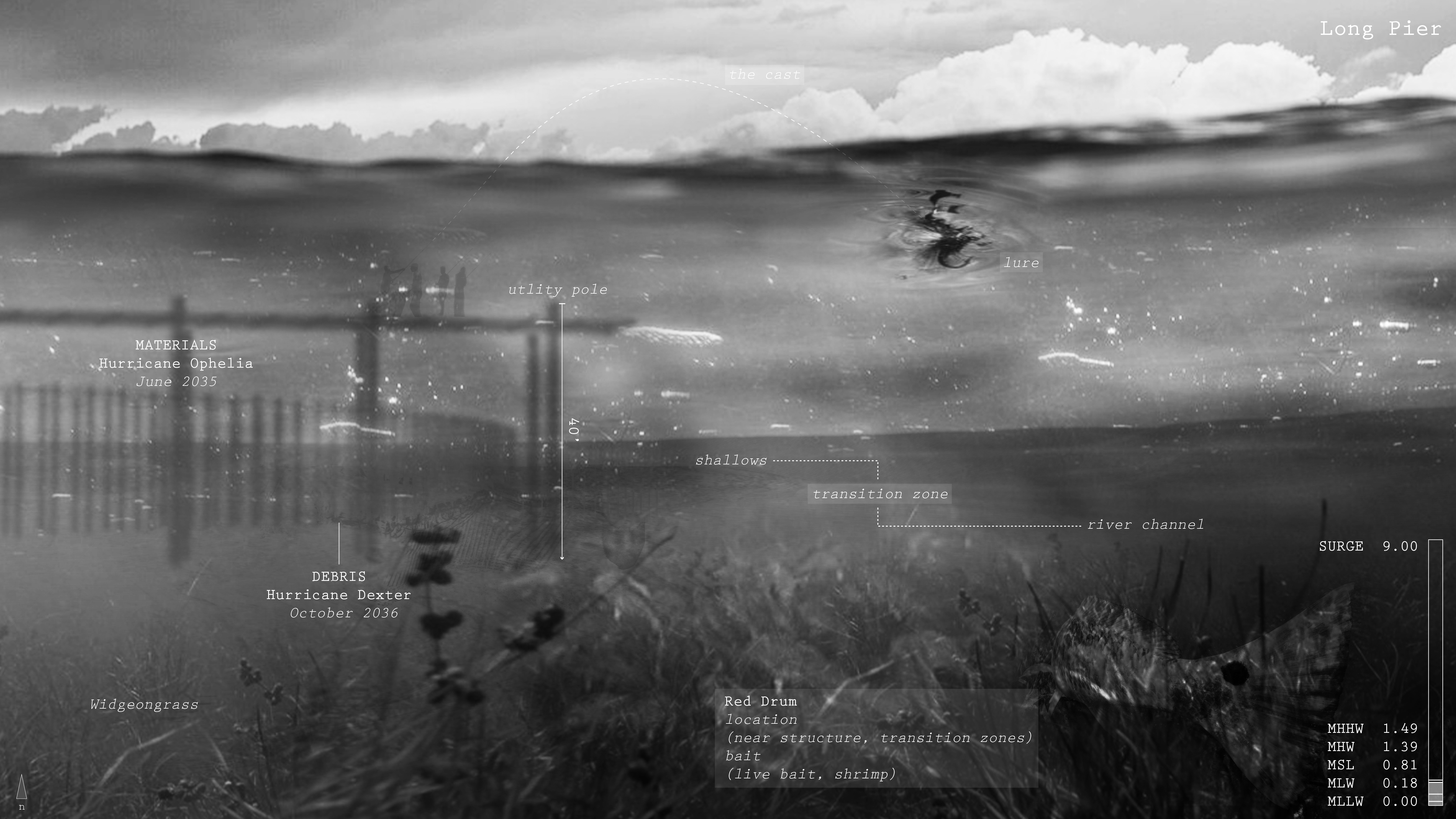


ENTER
As the water laps at the pilings, so too does it lap at the
body. This design measures discrete changes in tide, in degradation, and in accumulation as it relates to the body. Your legs become a register for the slight change in grade as the long pier slowly moves up and out of the water, only noticeable by the water
slowly receding down your calves.
As storms move through each year, wooden planks are replaced by the hands of the community. The piers
maintenance therefore becomes a directory of community value.
Now that one can reach deeper waters and bigger fish, the fishing line
protects the body from the accumulated toxins that still remain in the flesh of the fish that they catch. Fishing line stored on site, free for all
to use, is calibrated for the fish migrating through, and the maximum weight of the fish that could safely be consumed. This line embeds the
advisory into the tool, rather than in signage; snapping when the weight of the fish is too heavy to eat safely that day.
The Round Pier registers the tidal range of the river by wetness on the wood, while your body feels it as you wade into the water.
These moments are intentional and build whole bodily agency over this place.
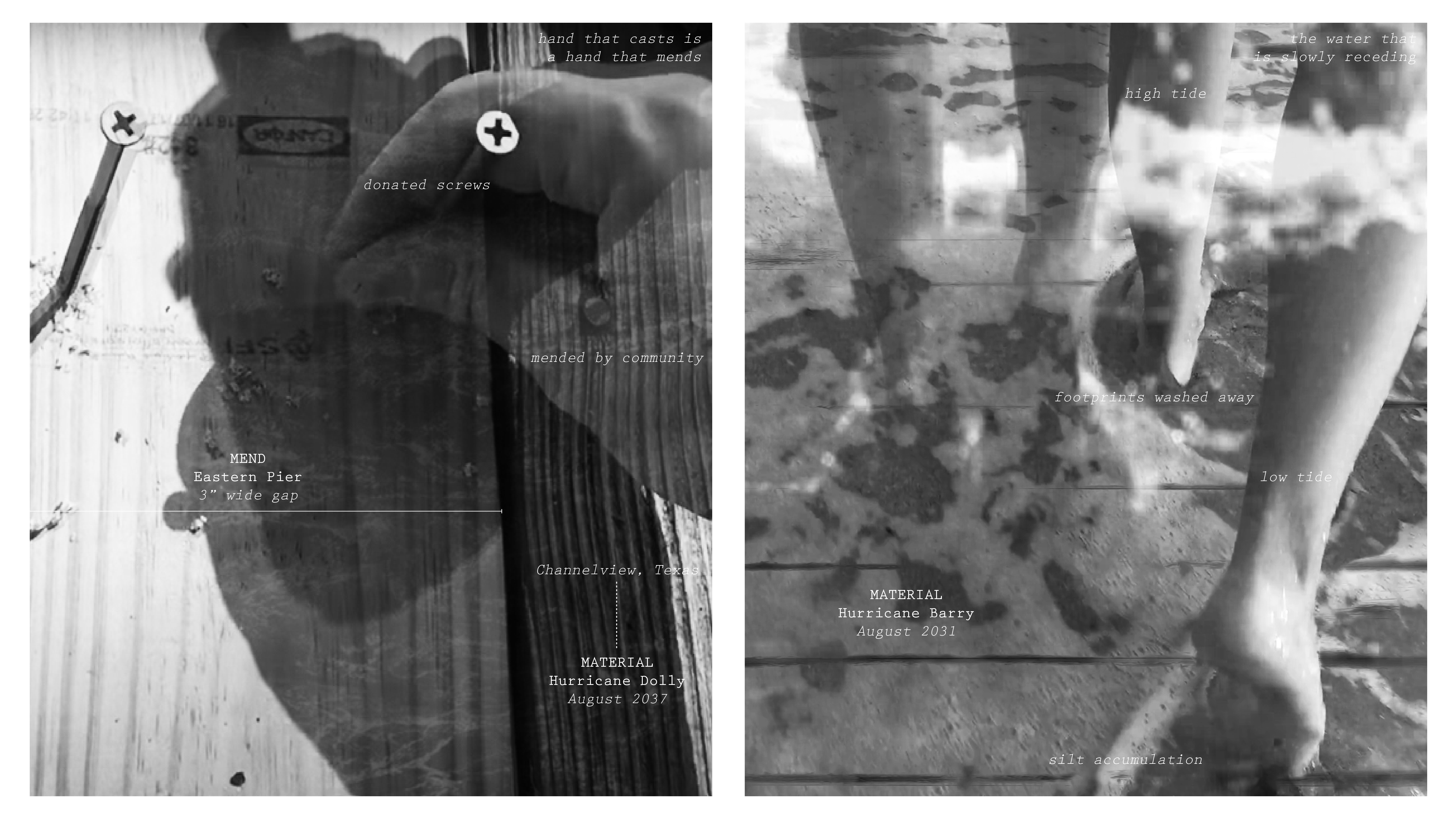
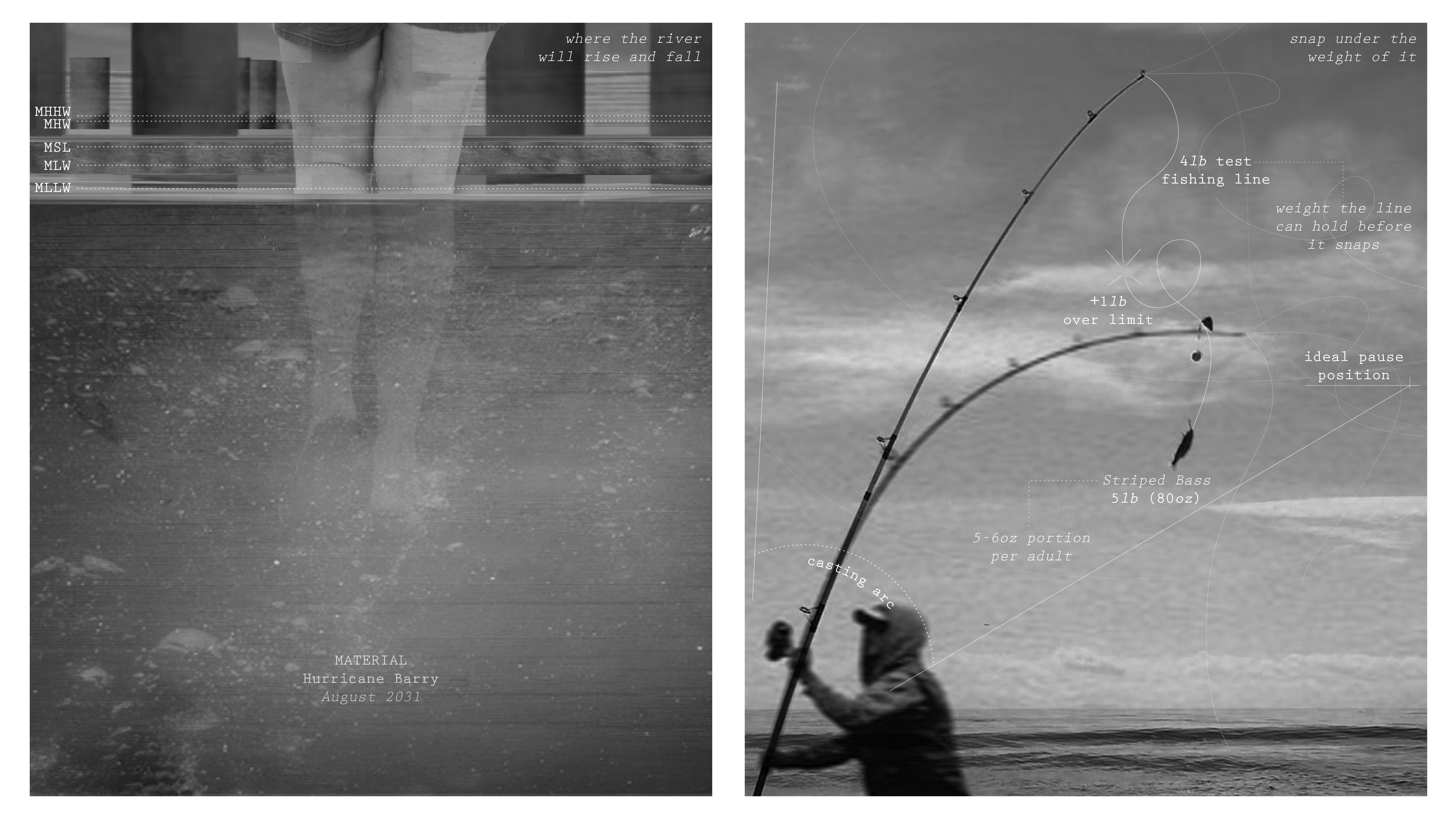
Your line has been cast, the sharp snap of the sunlight captured on its translucent wire indicates a strong wind - the dance of the line. The line fl oats out, suspended in air, twisting, warping, but always with a strong direction. Each cast has a goal. A destination. The last sound to hit the water - a plop -
before it goes silent below the surface of the river. You cast near to the pier - your goal is Red Drum
today.
The sound of fishing from this pier builds in anticipation of the storm. The low hum of conversation filled with moments of silence, the clicking of the reel, the snap of the line, the oohing and awing, the creaking of the boards as people pass, coolers full, coolers empty. The lapping of the water as it hits the wooden piling adorned with its previous life. Your own stillness, in thought, in your body, puts you in a trance as you wait for a tug on the fi shing line. You look forward to these moments, to when you cast a line deep into the San Jacinto River.
![]()
The sound of fishing from this pier builds in anticipation of the storm. The low hum of conversation filled with moments of silence, the clicking of the reel, the snap of the line, the oohing and awing, the creaking of the boards as people pass, coolers full, coolers empty. The lapping of the water as it hits the wooden piling adorned with its previous life. Your own stillness, in thought, in your body, puts you in a trance as you wait for a tug on the fi shing line. You look forward to these moments, to when you cast a line deep into the San Jacinto River.
